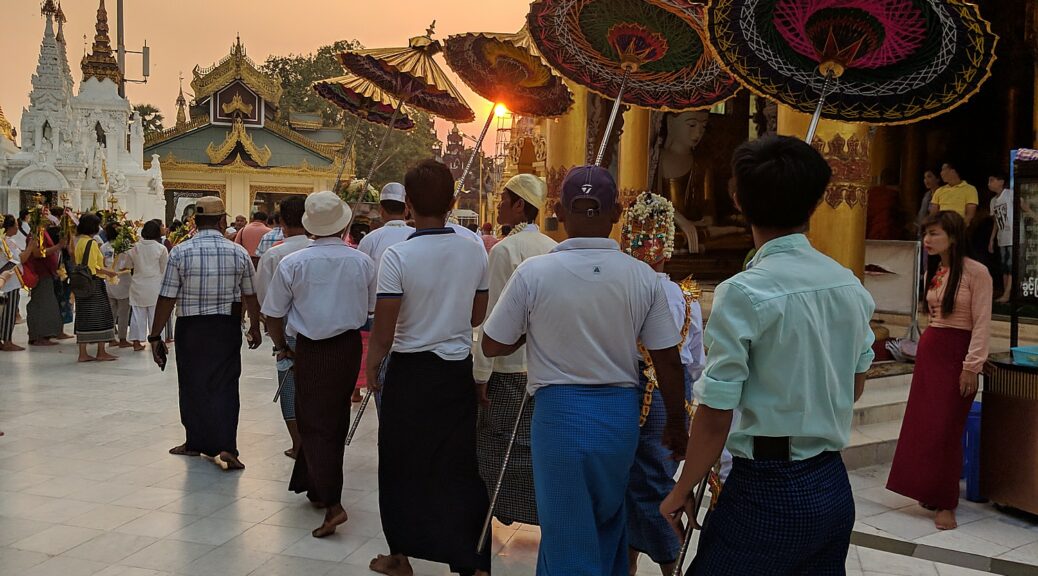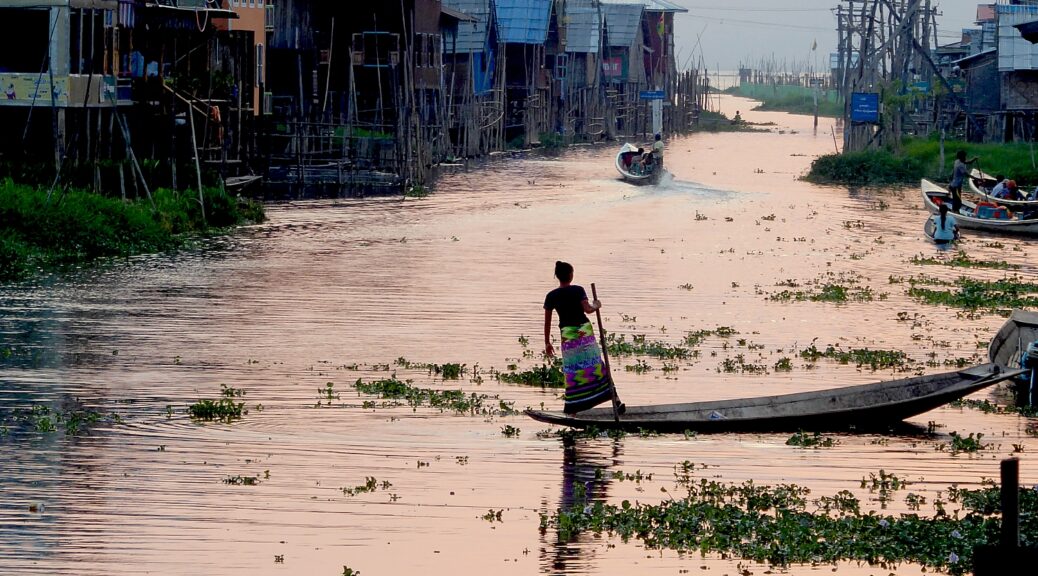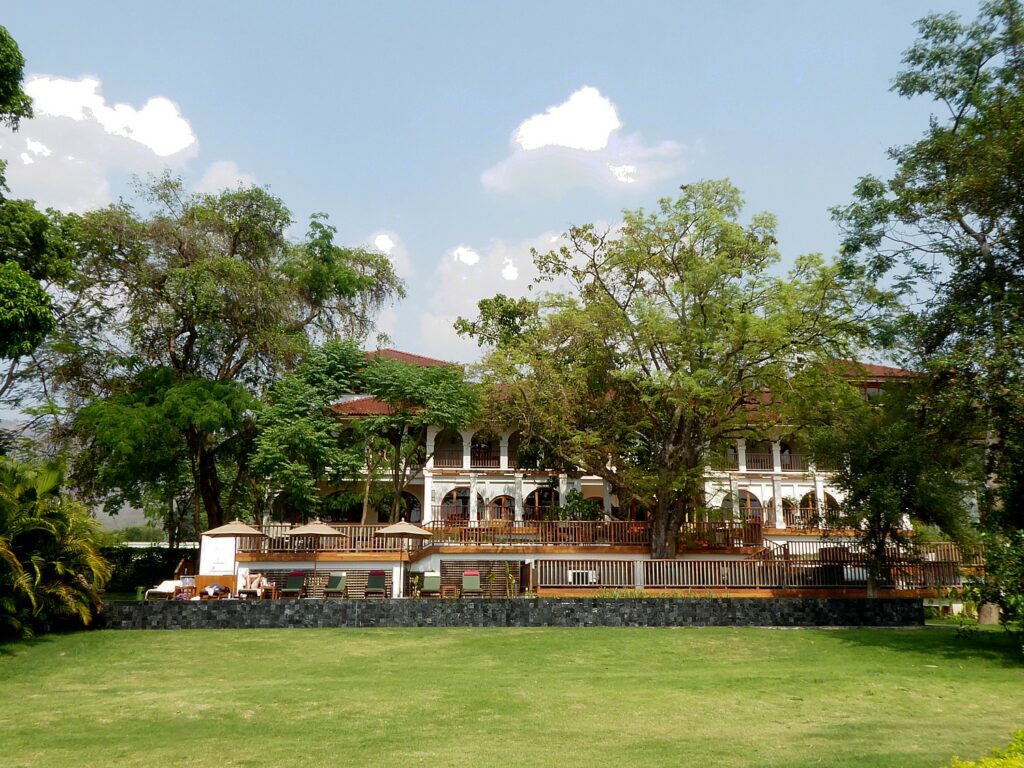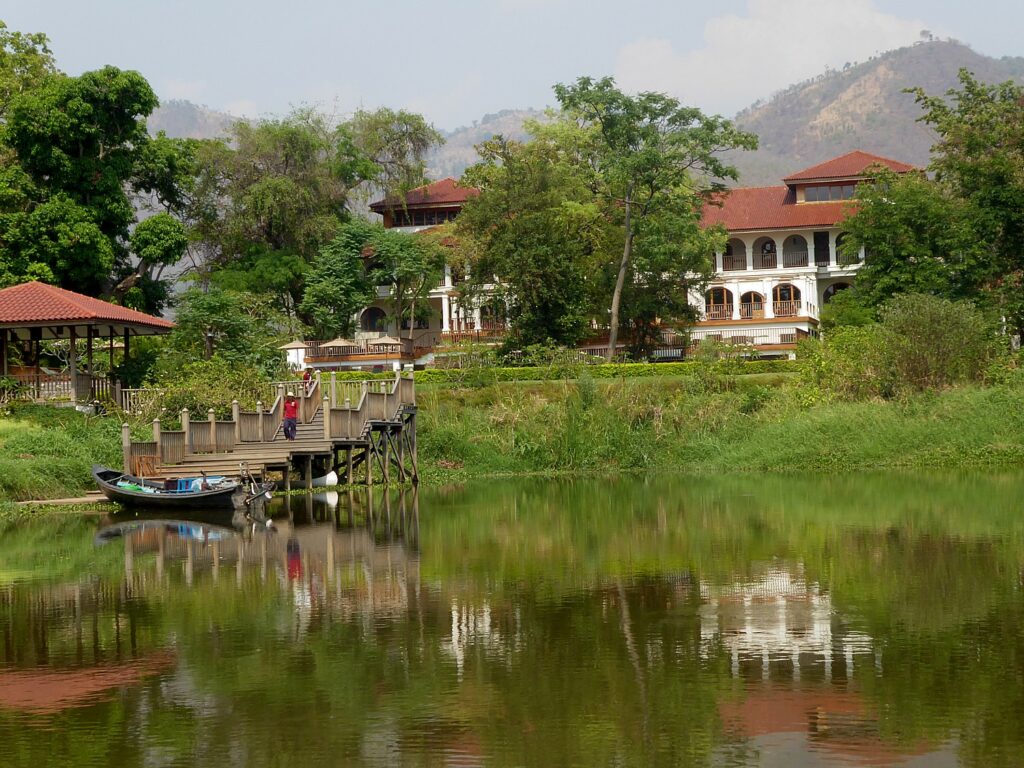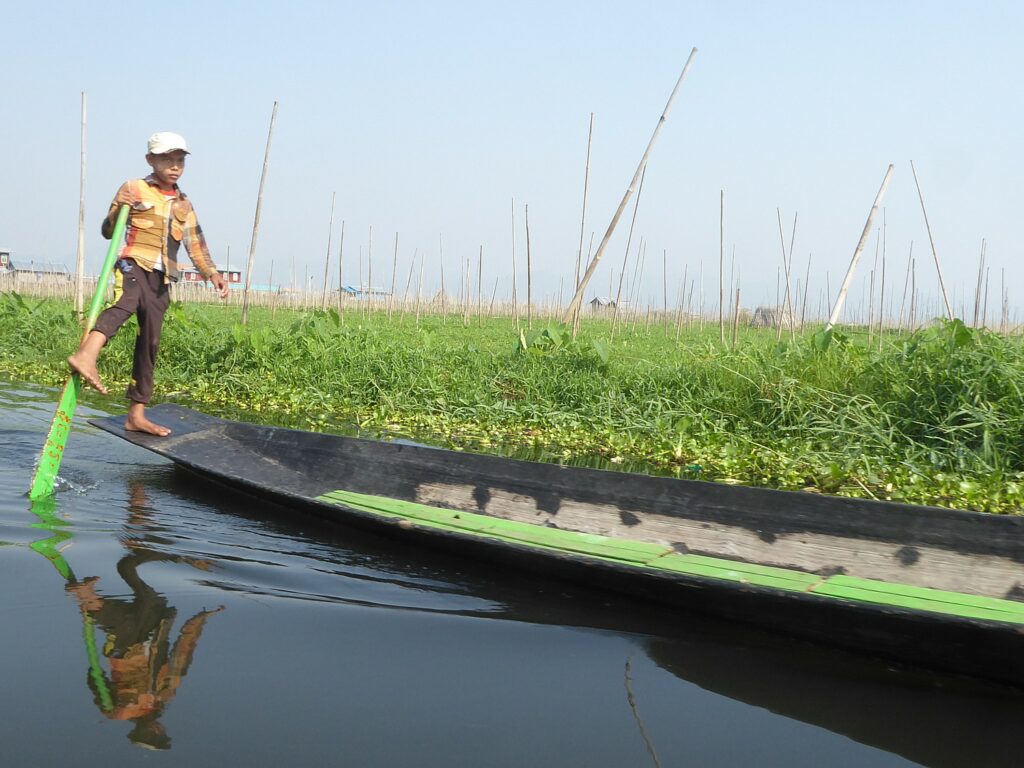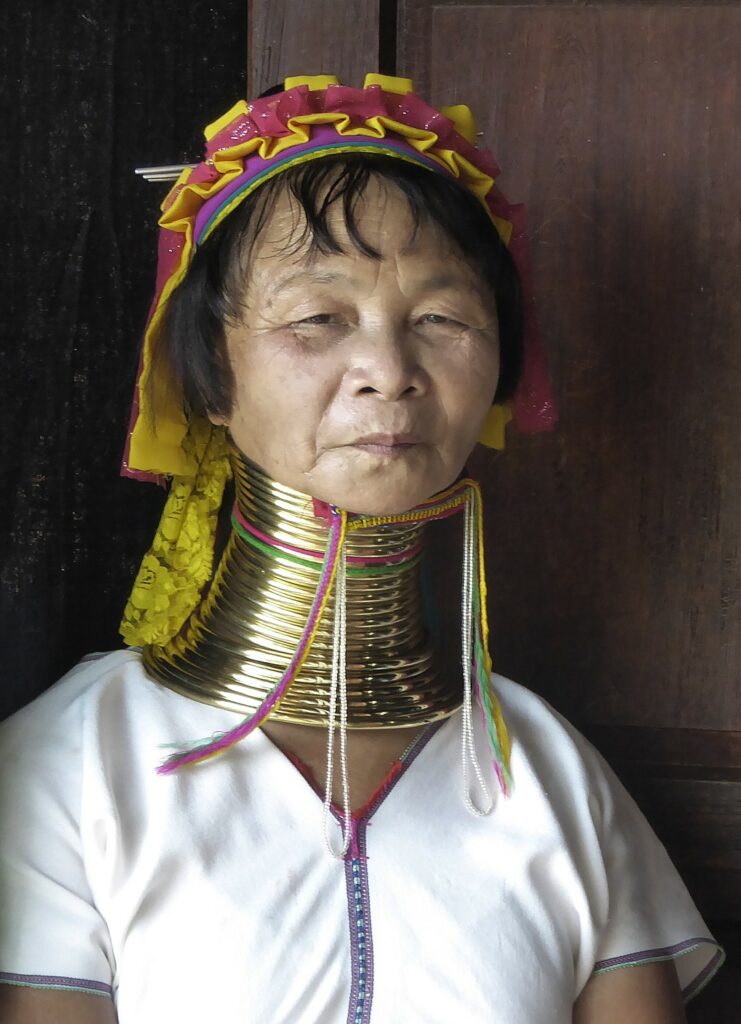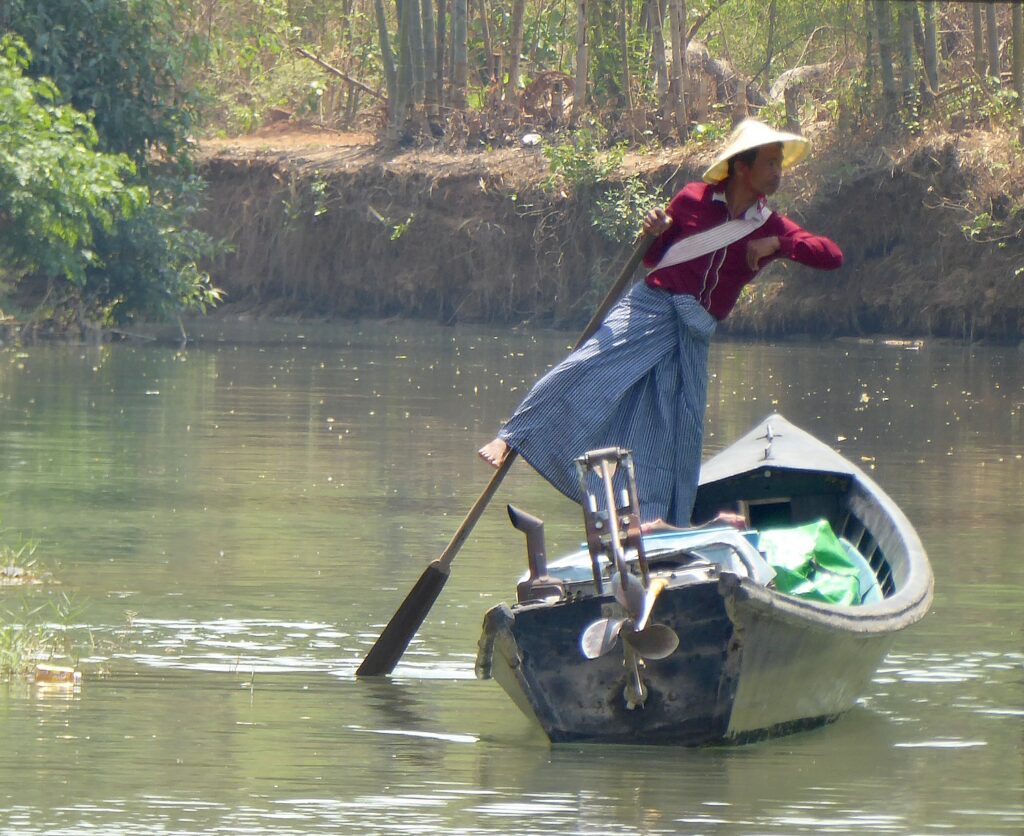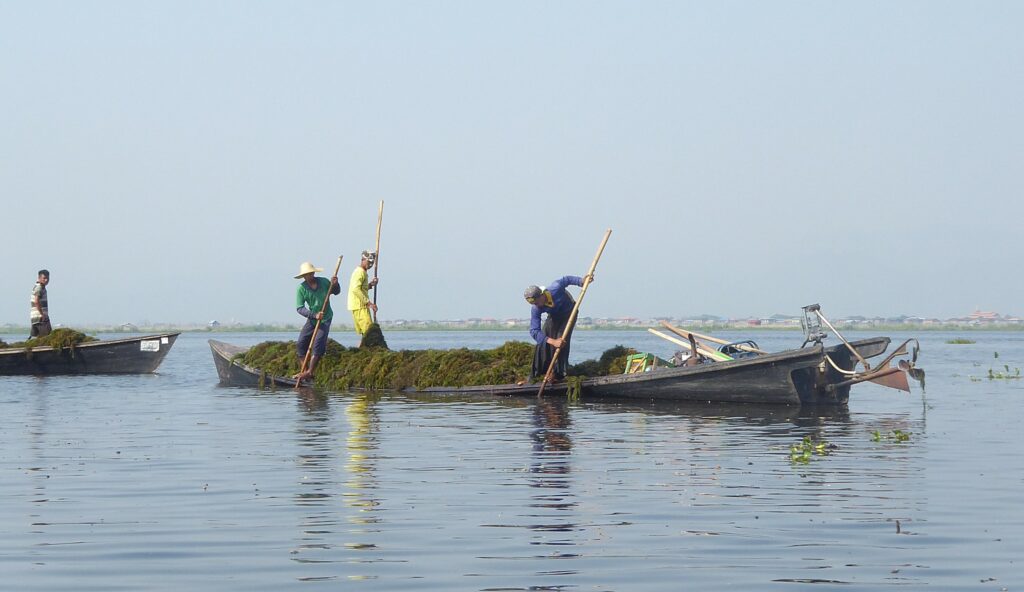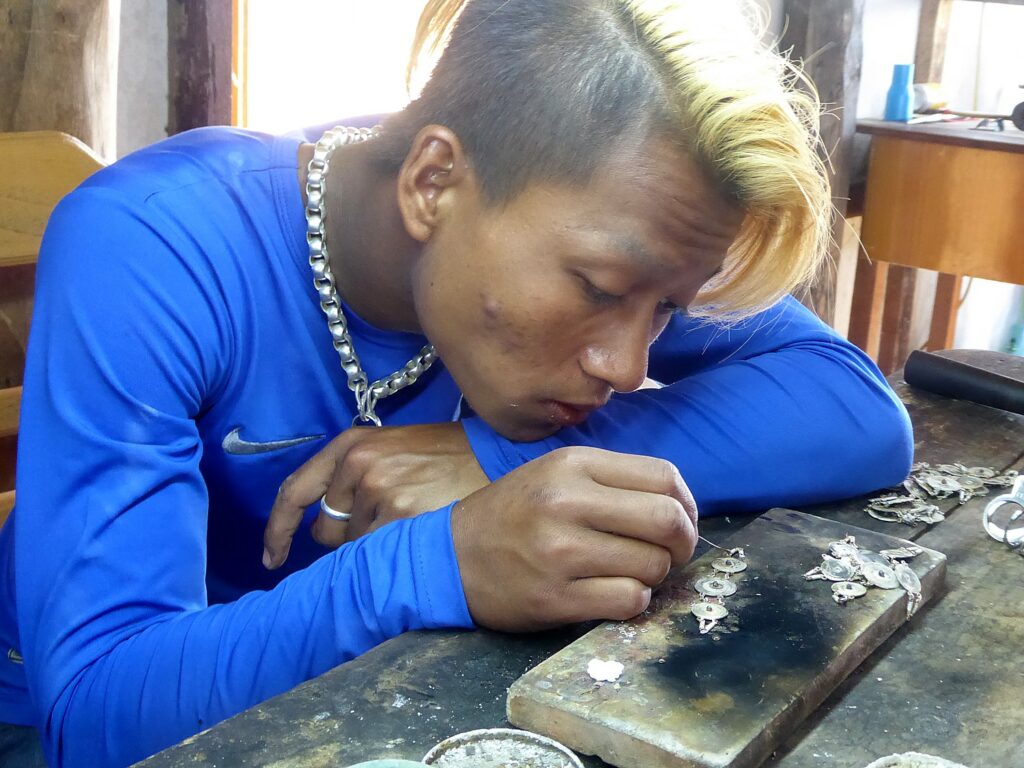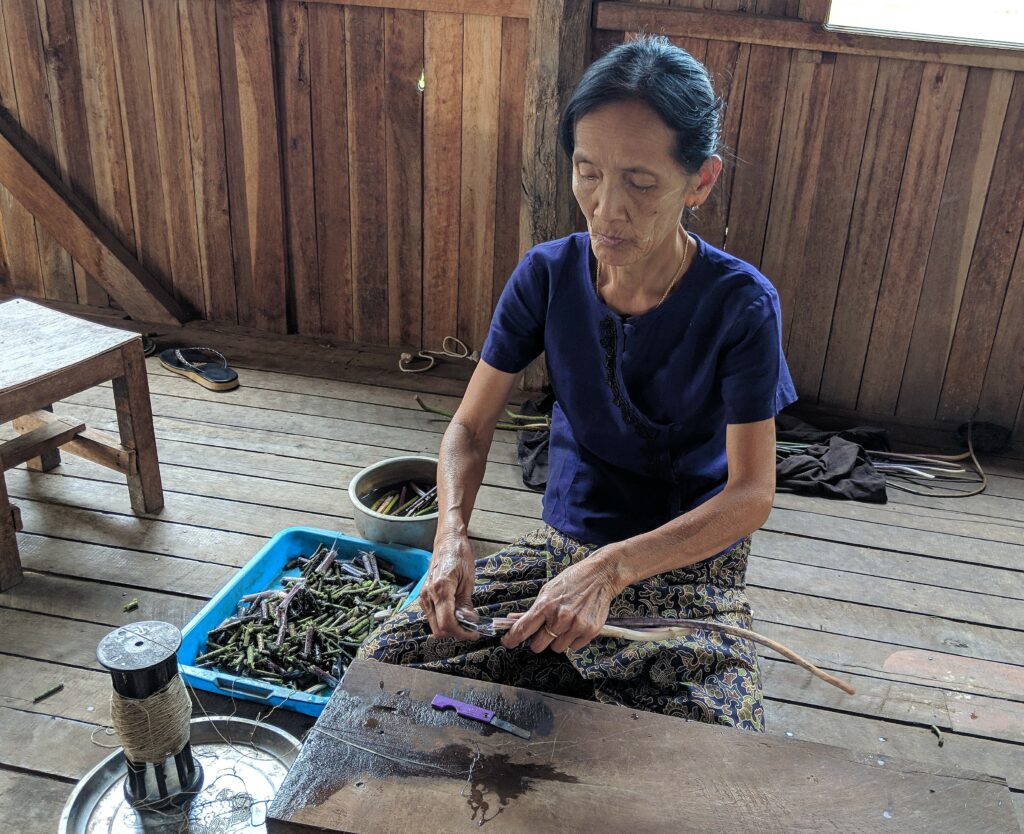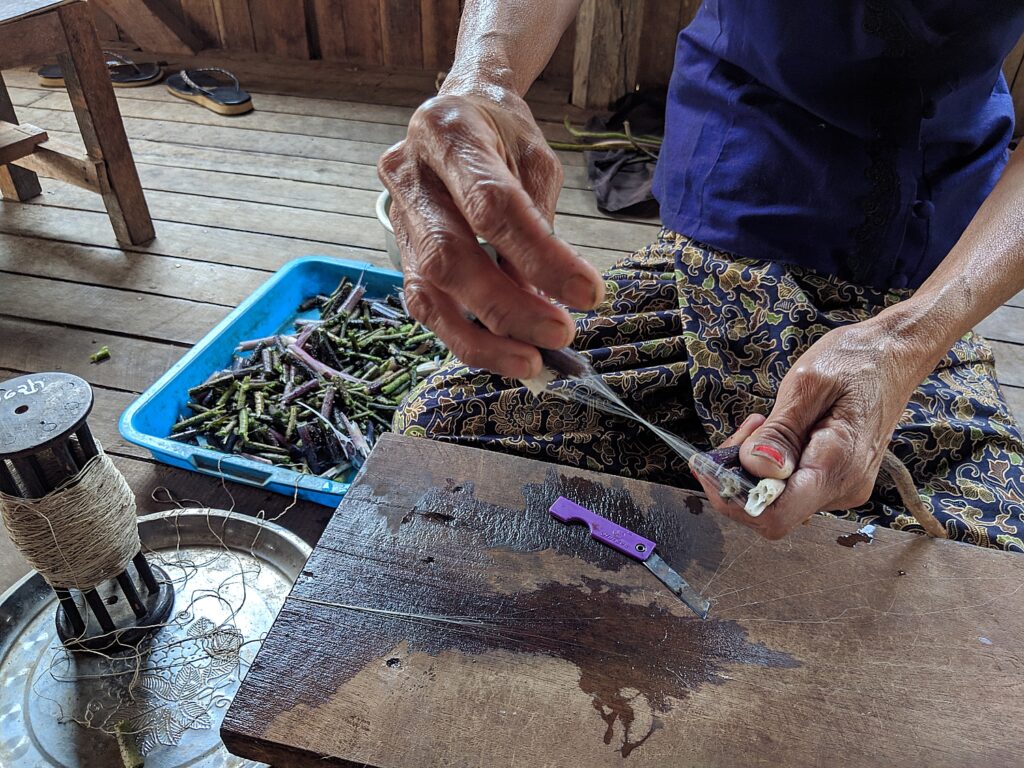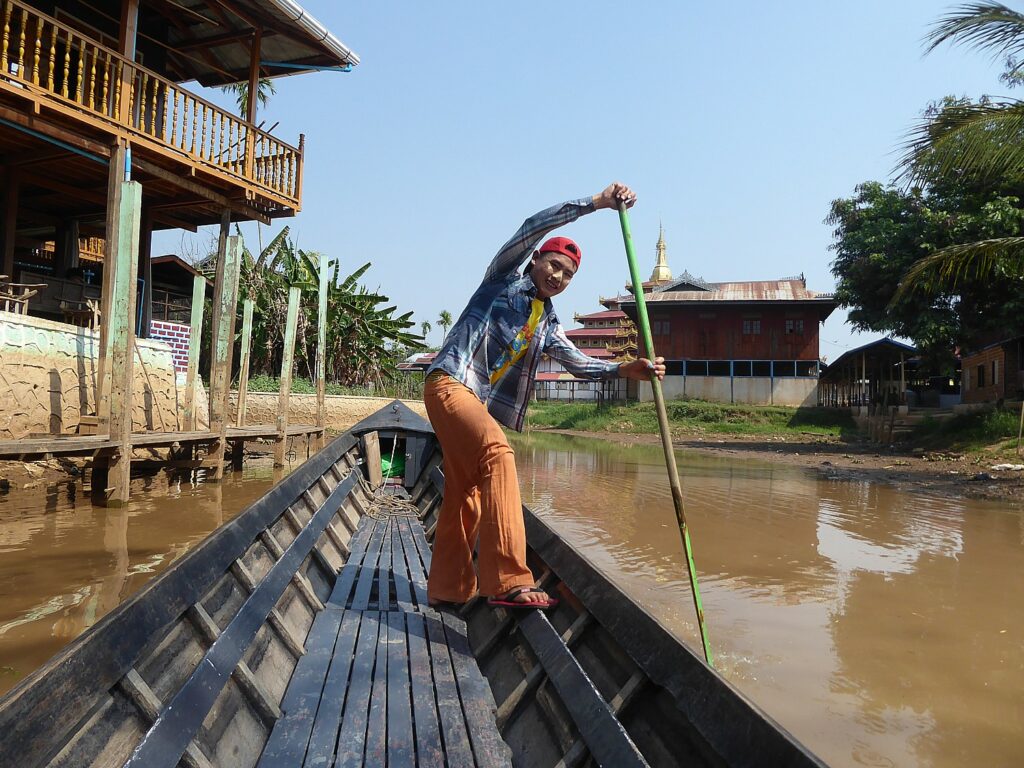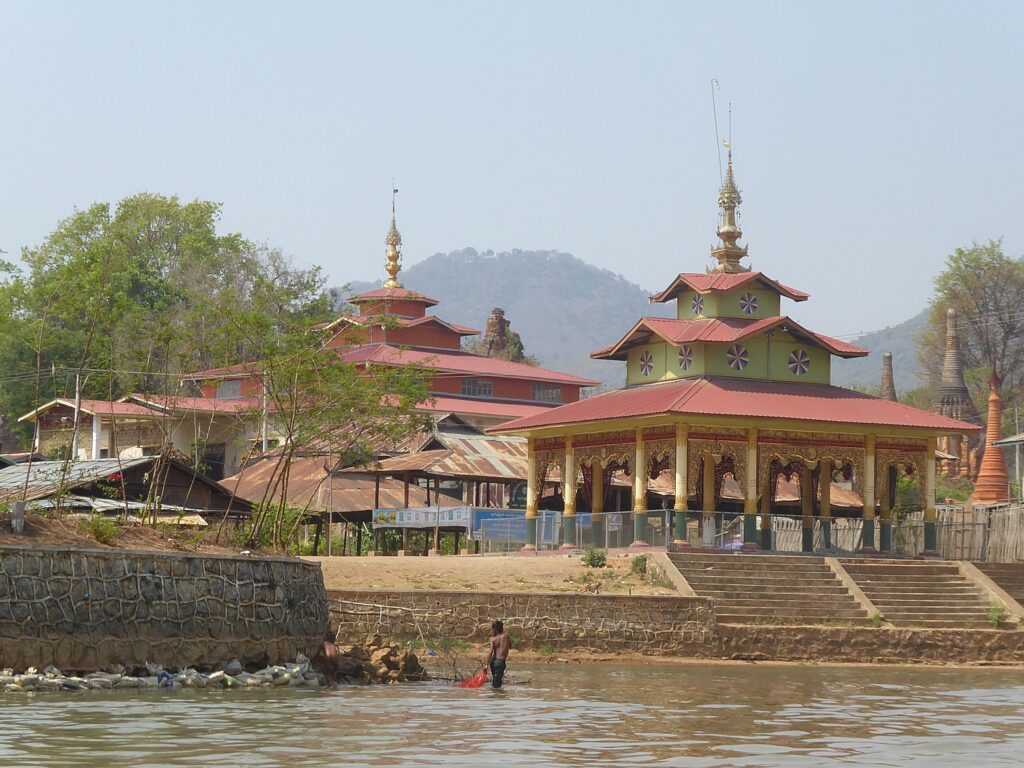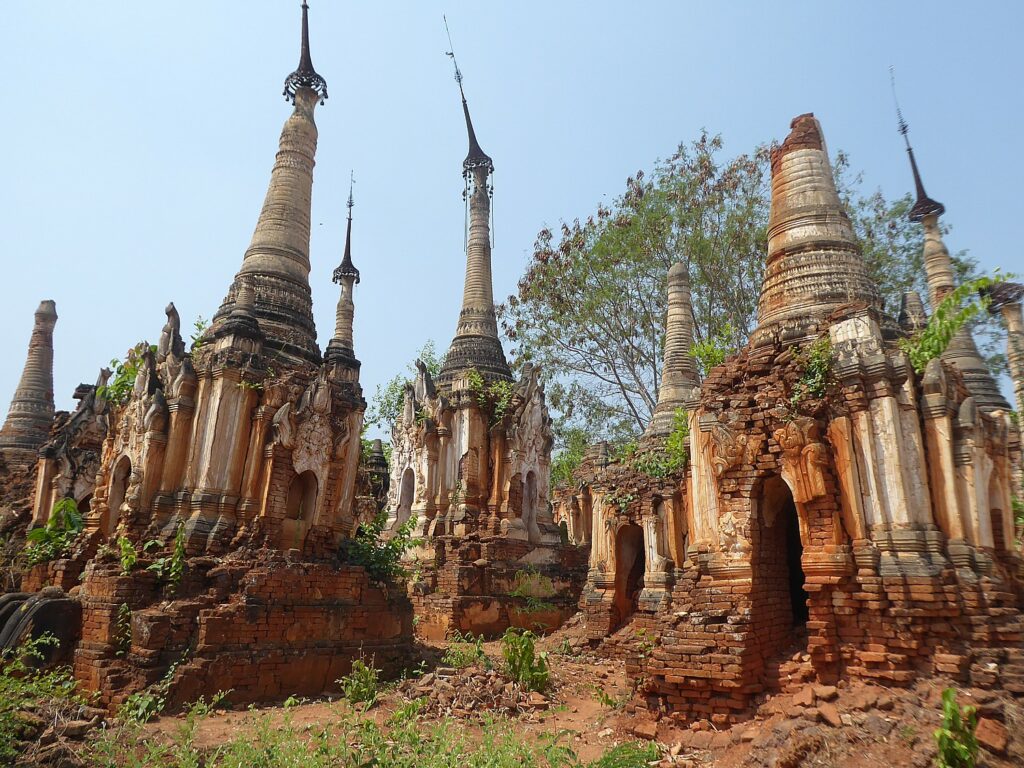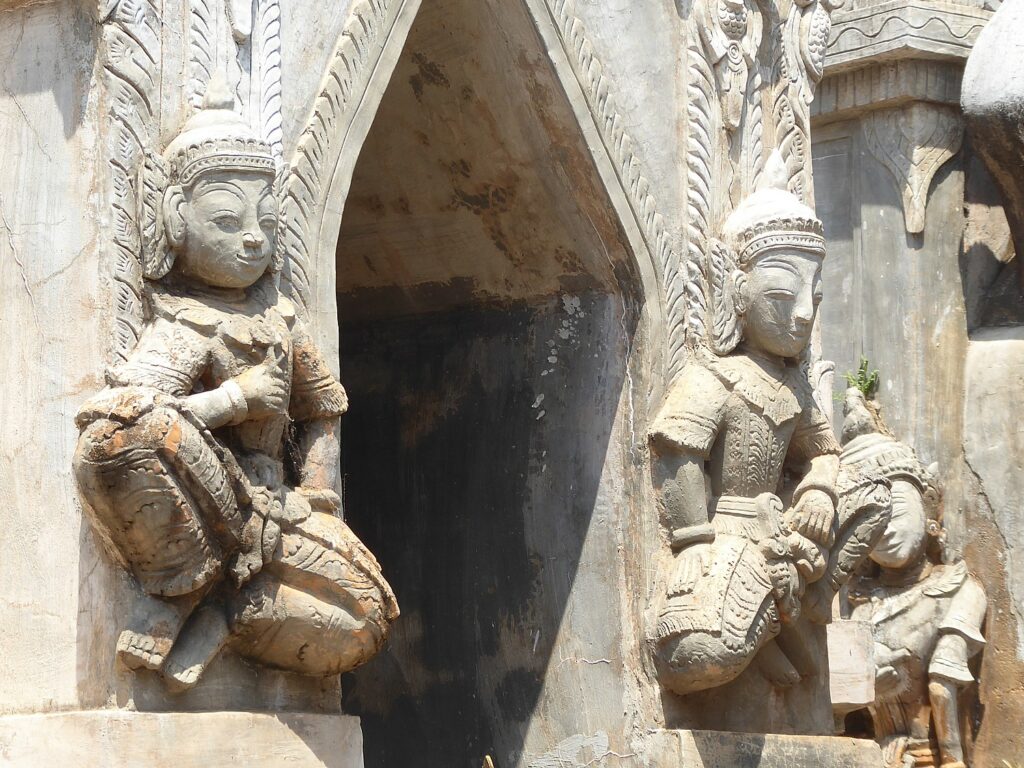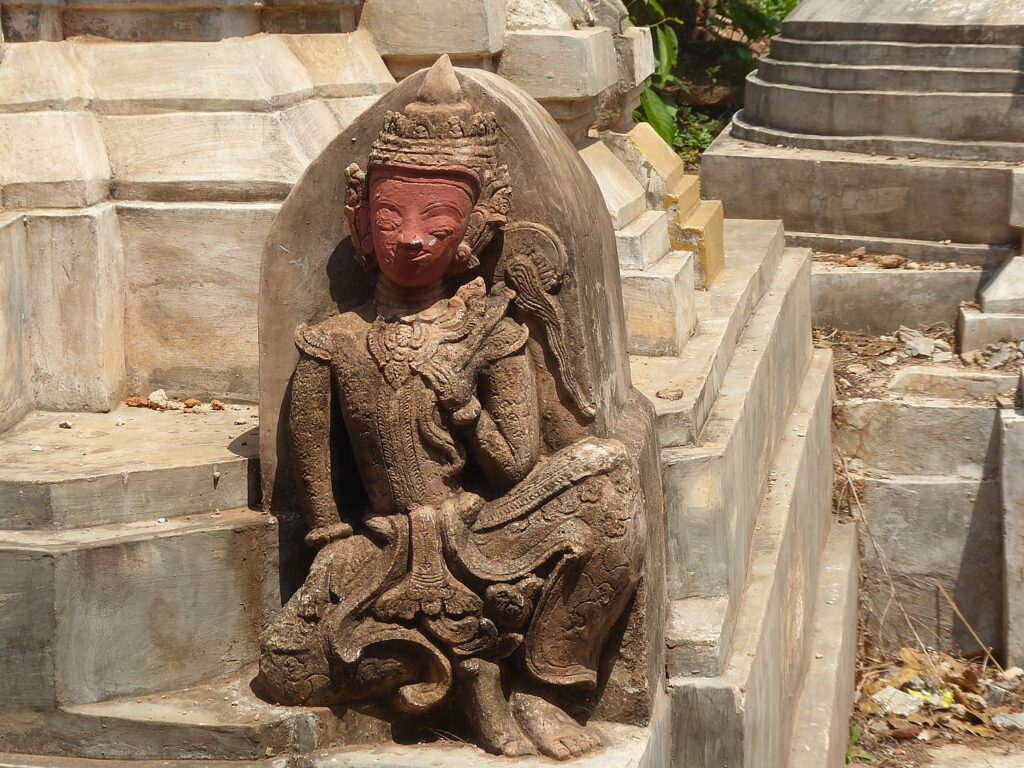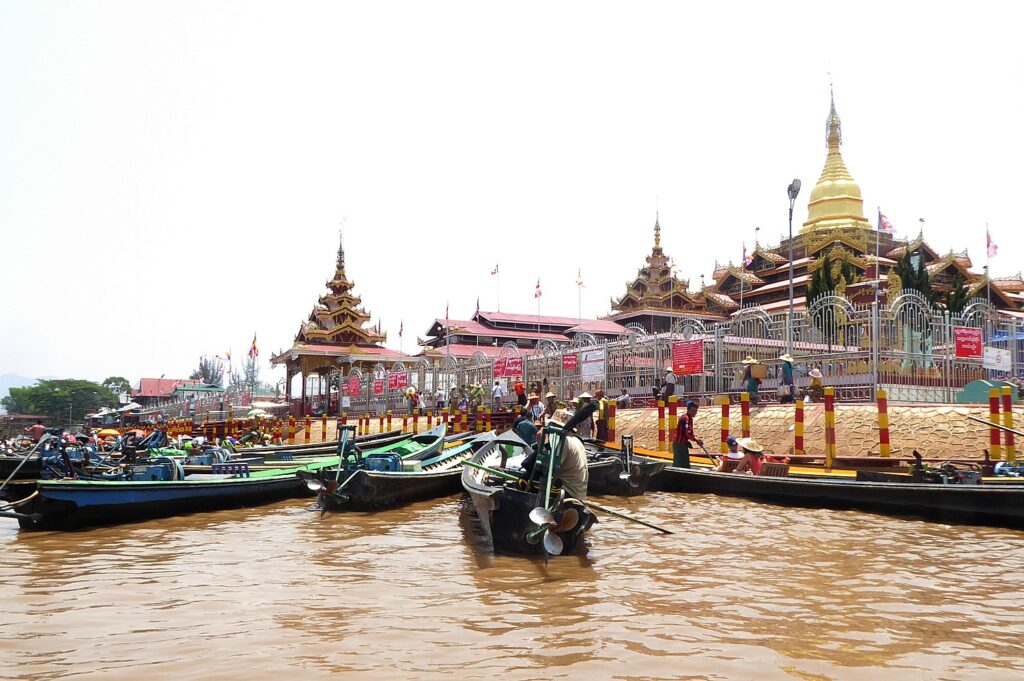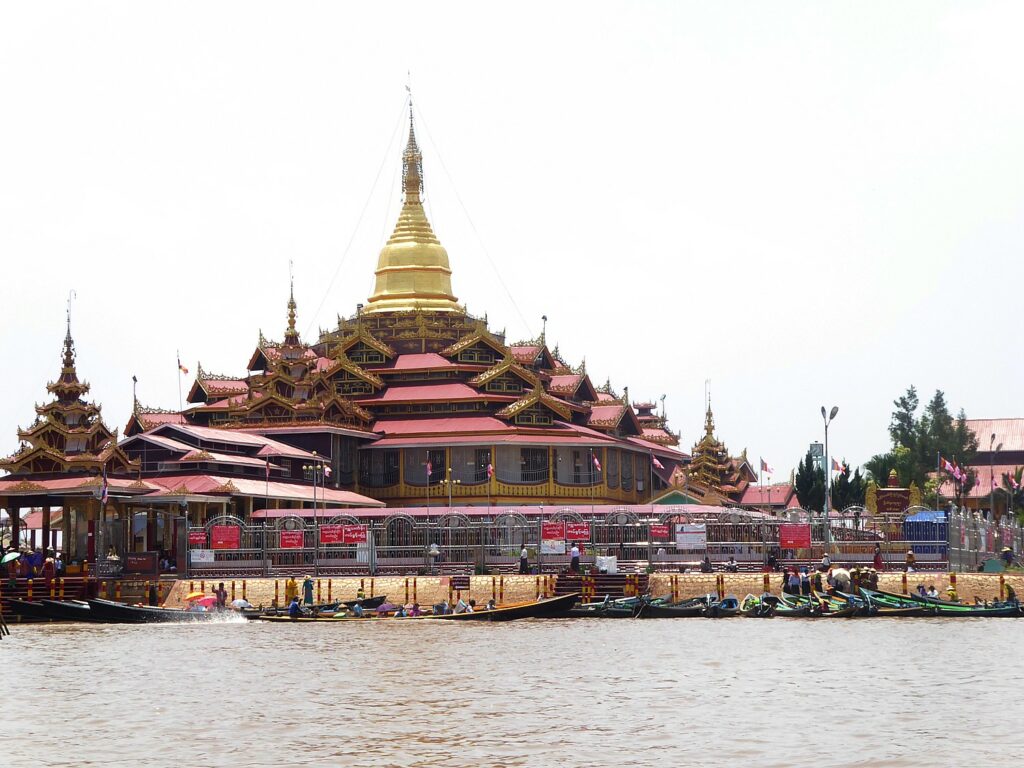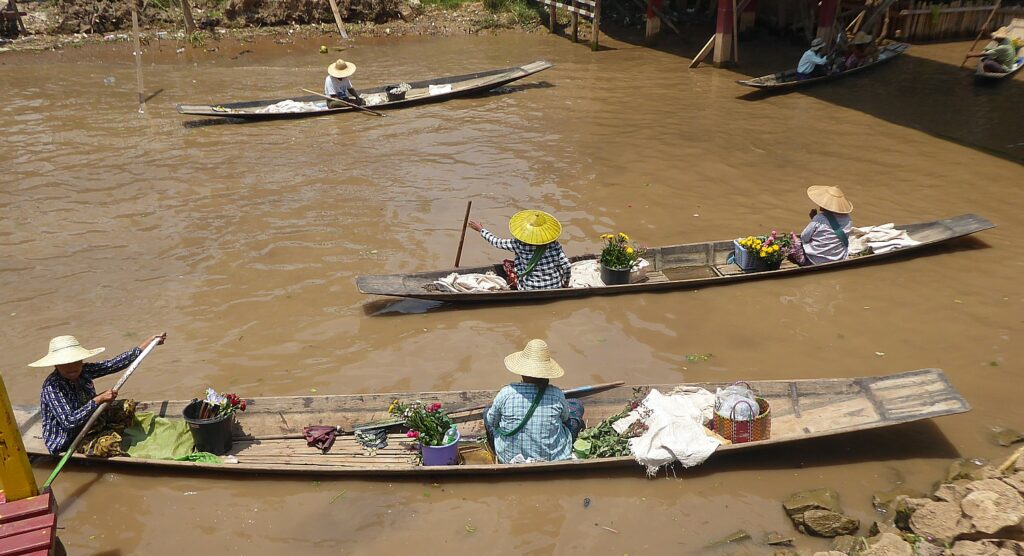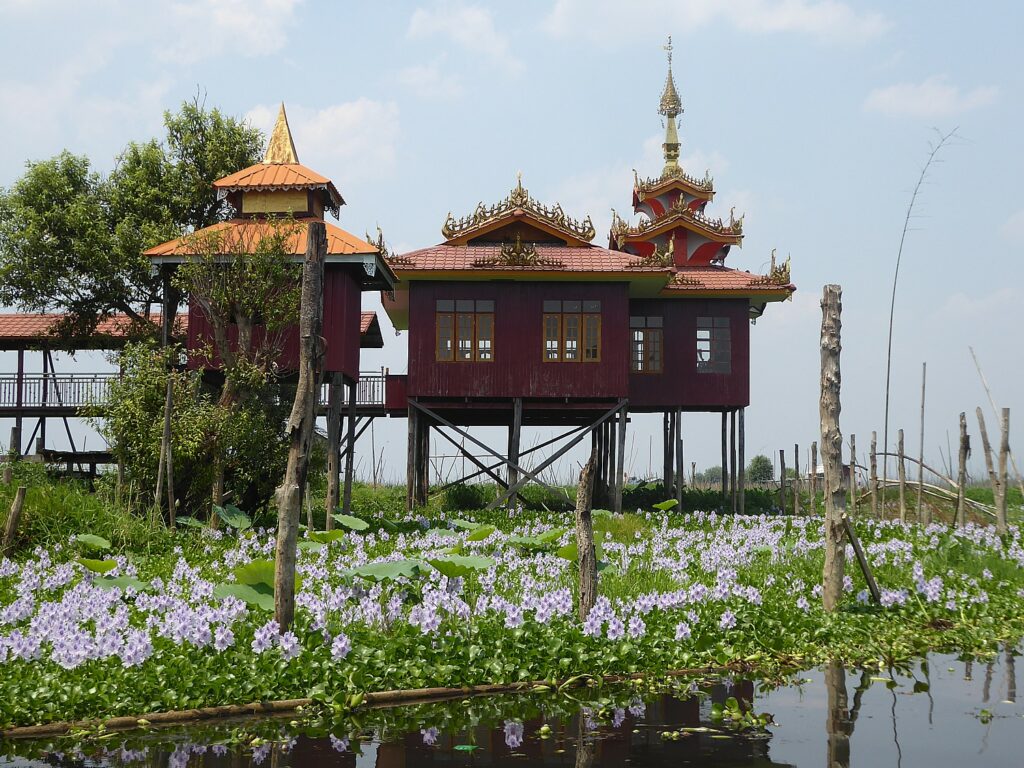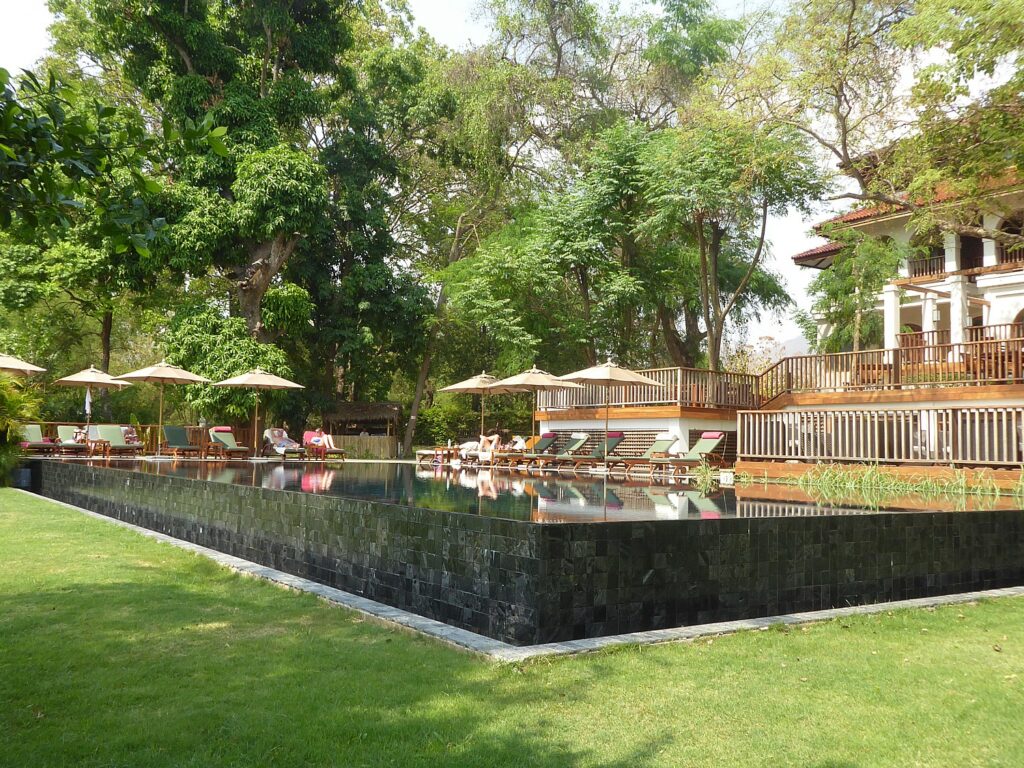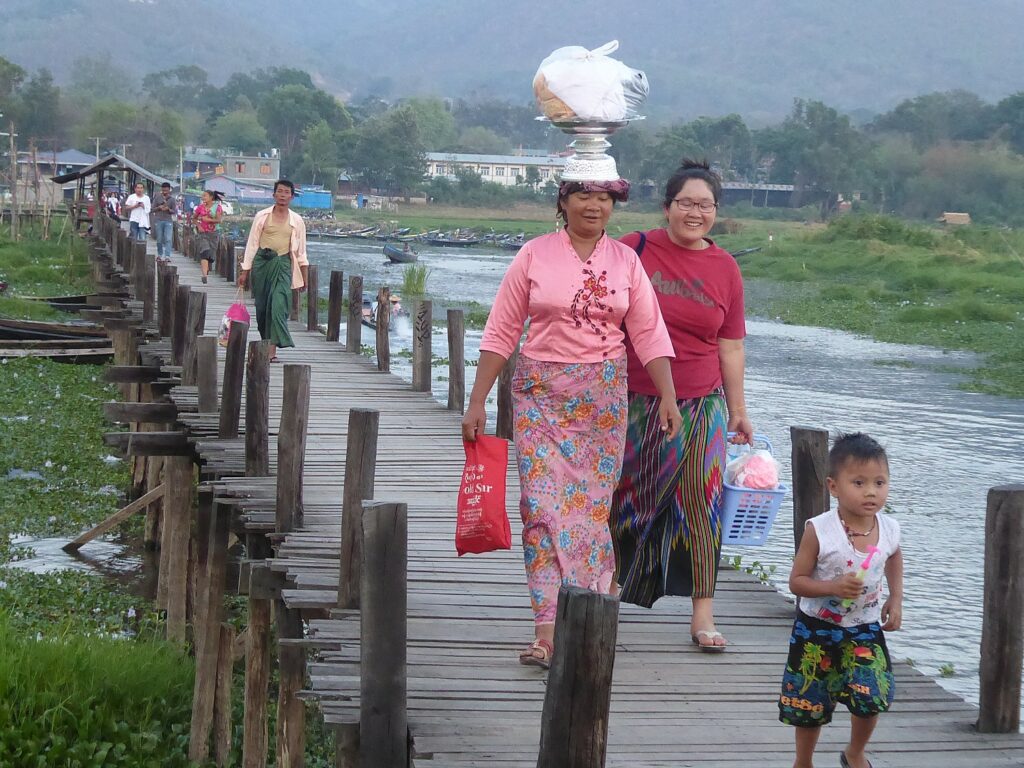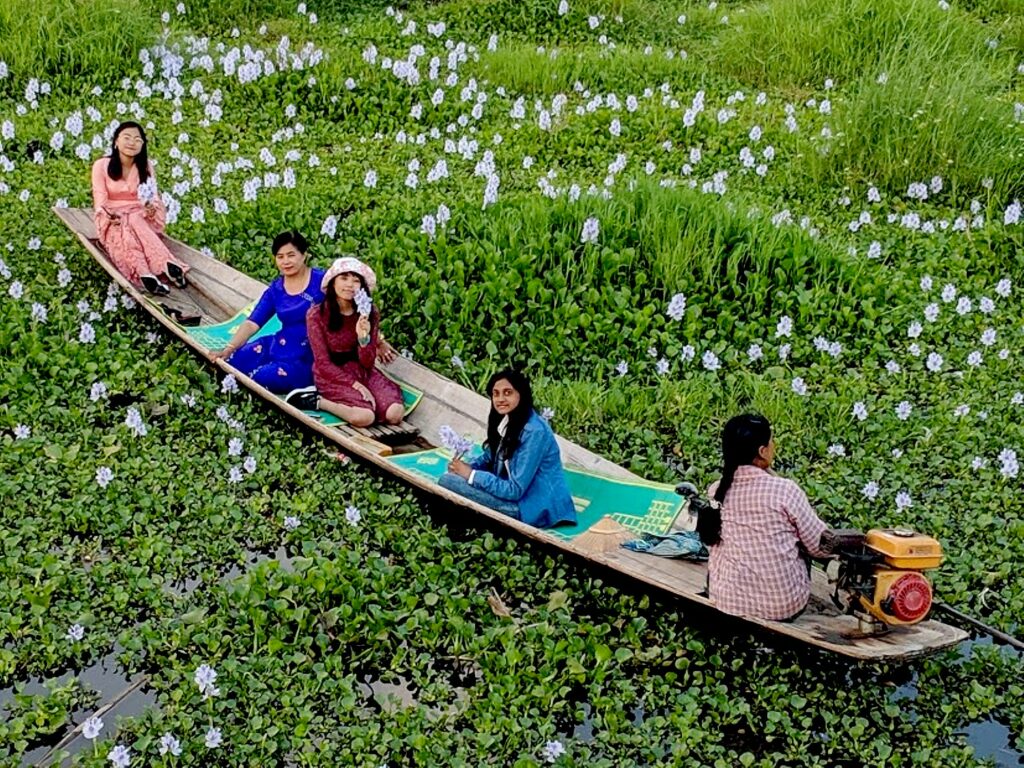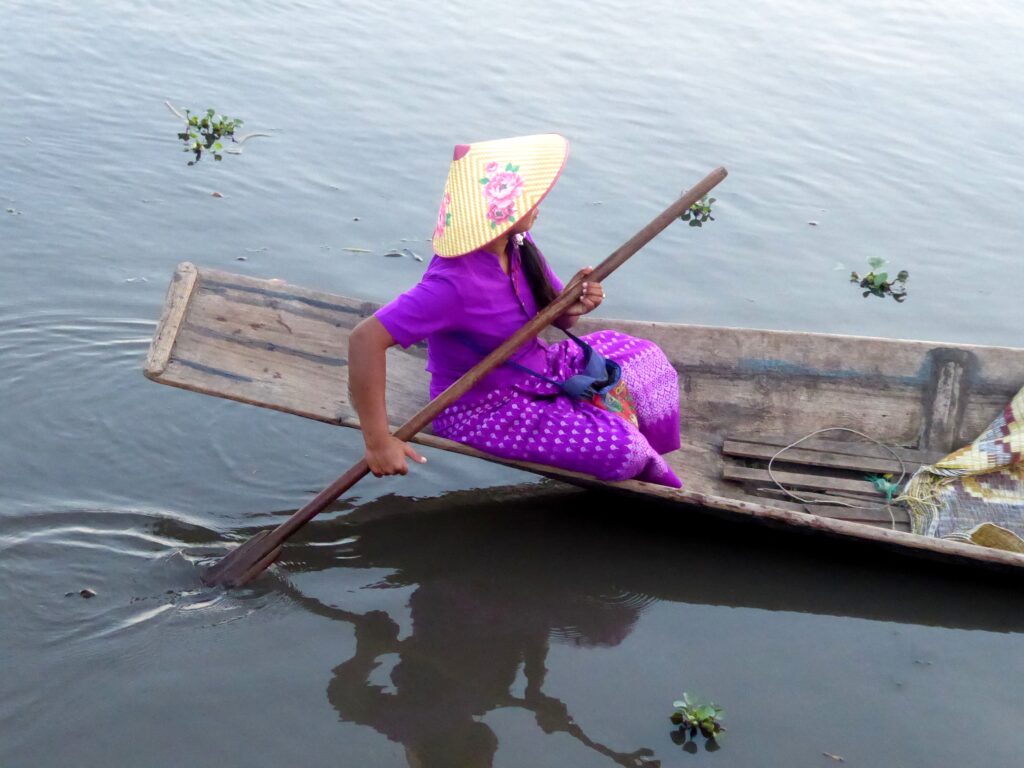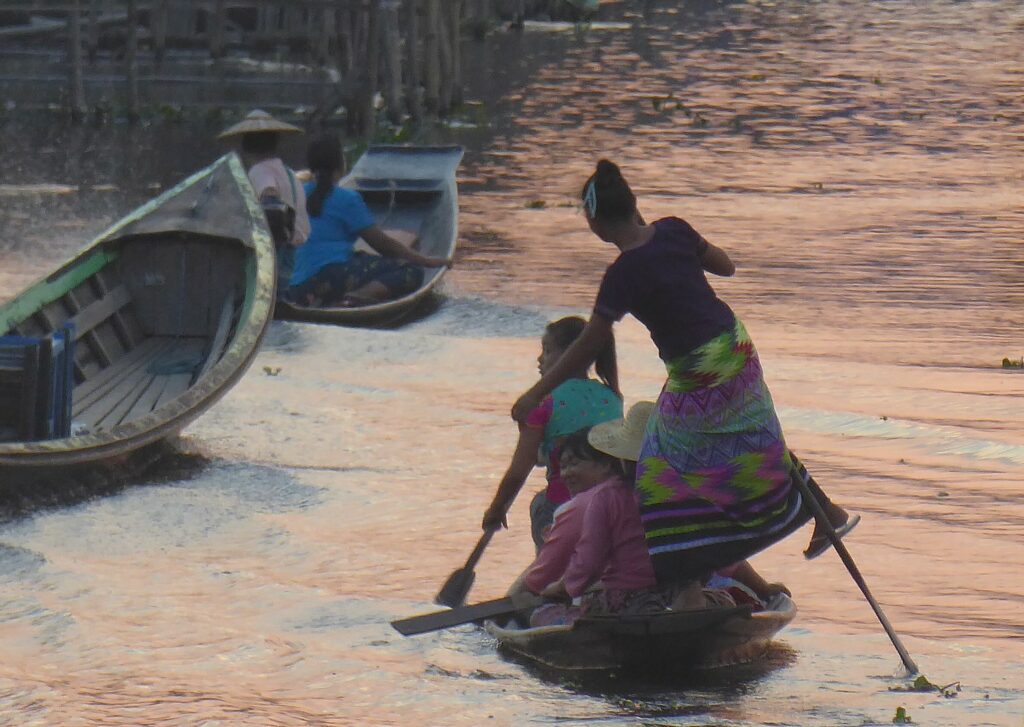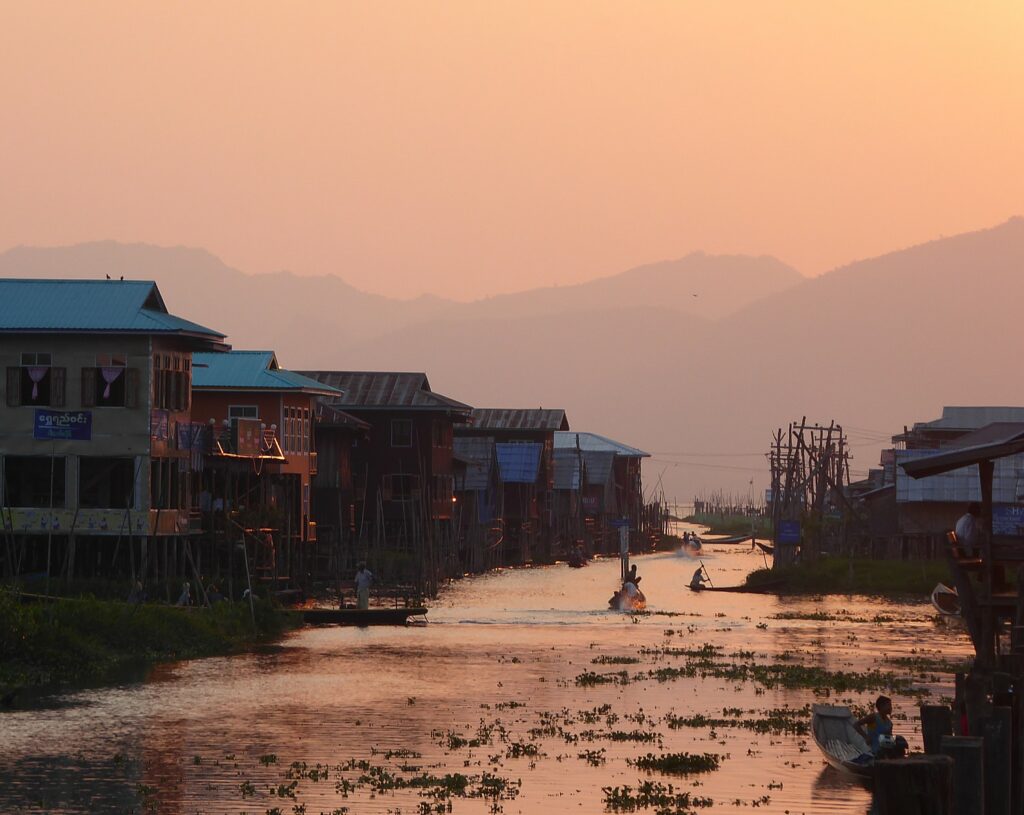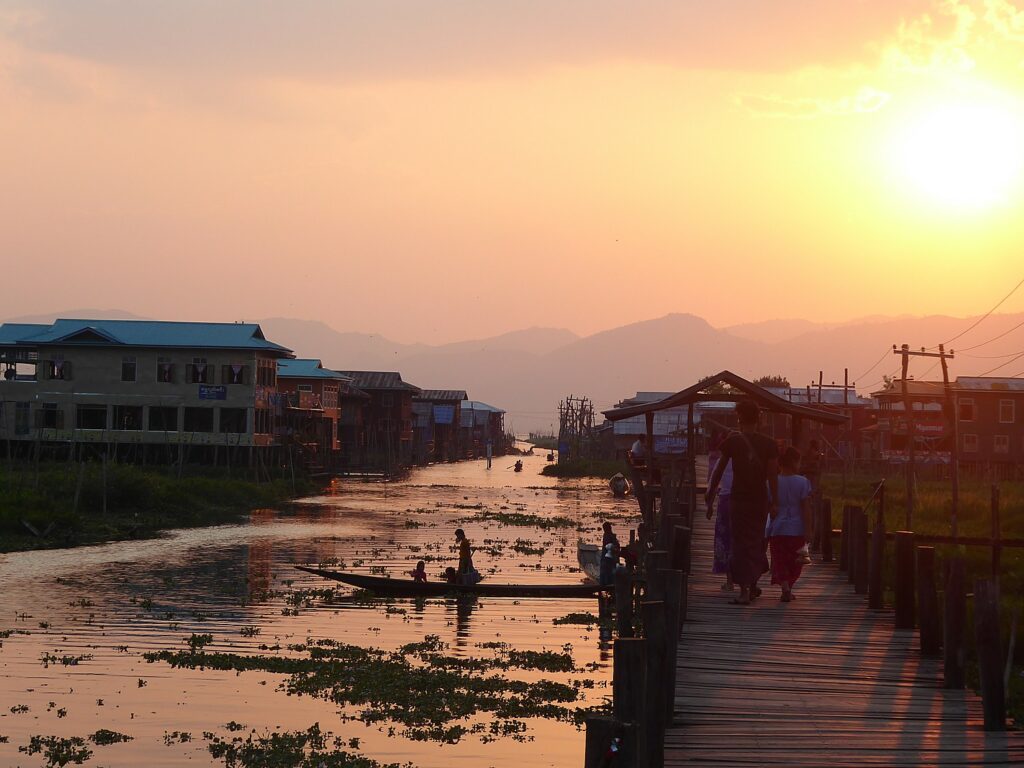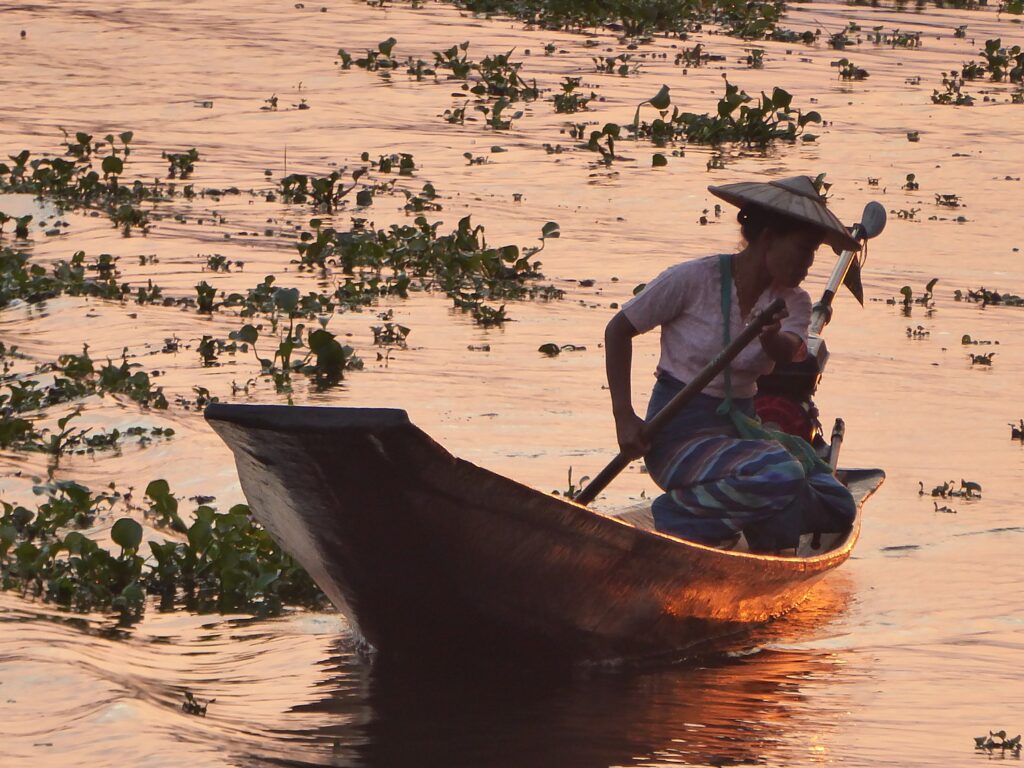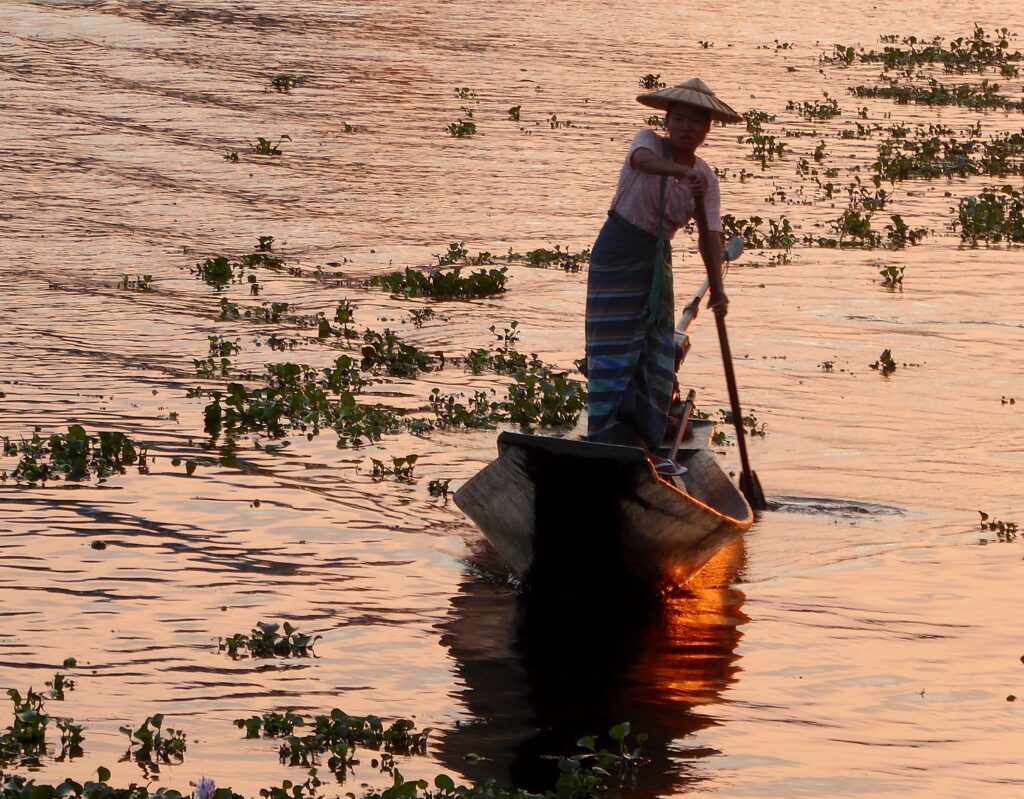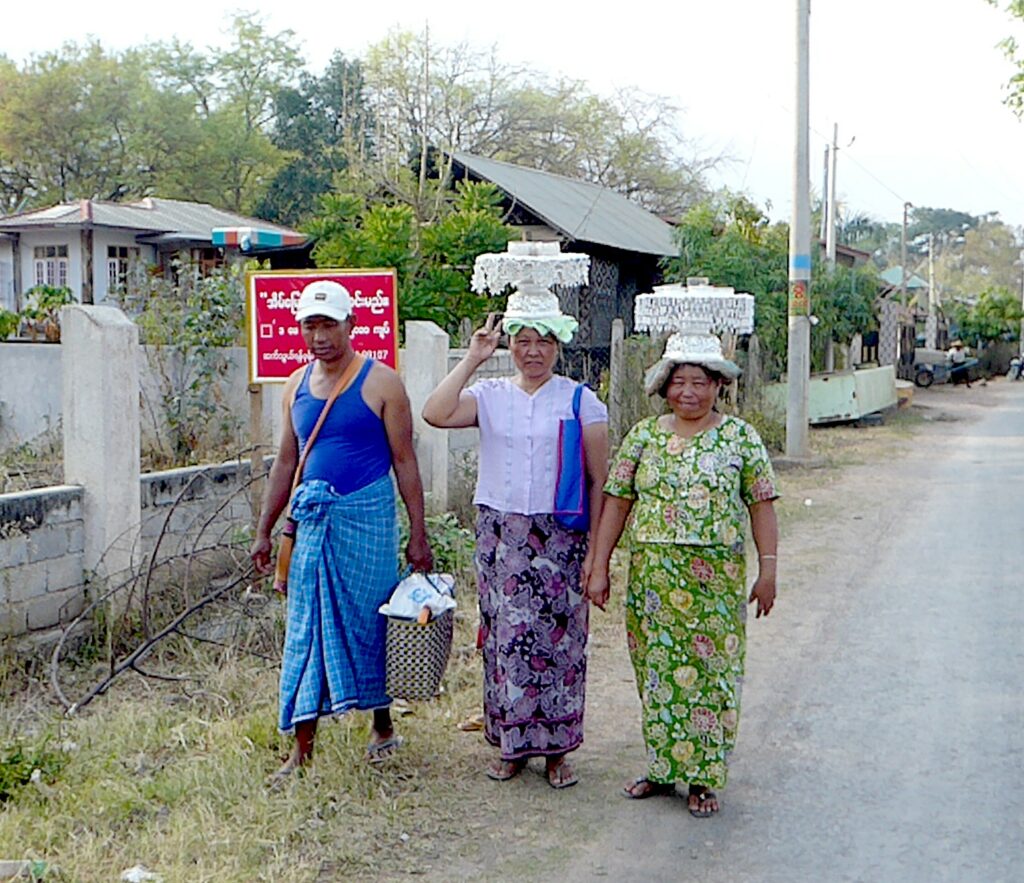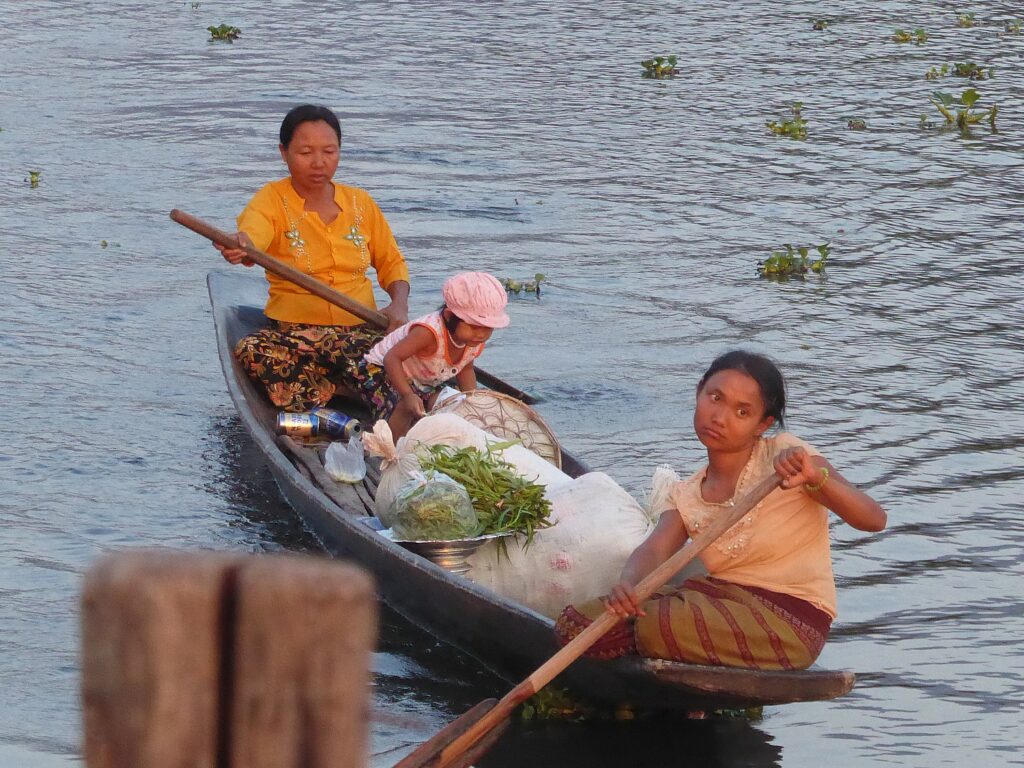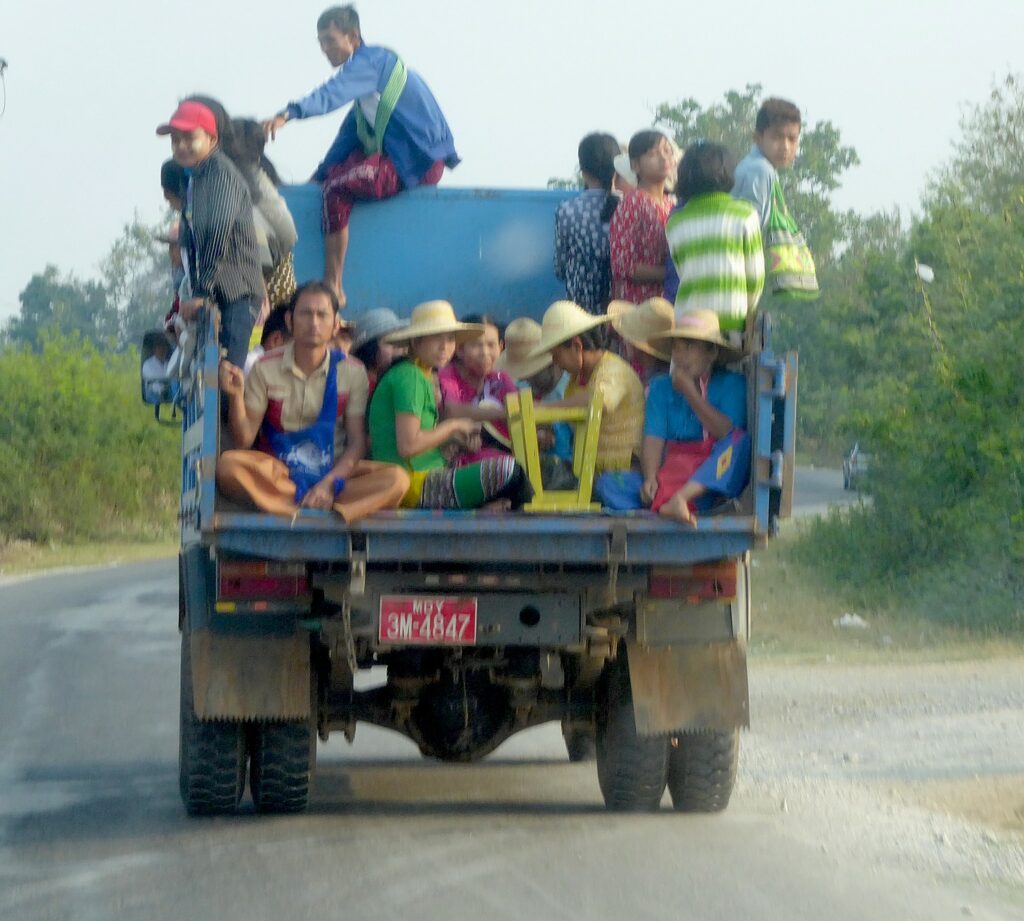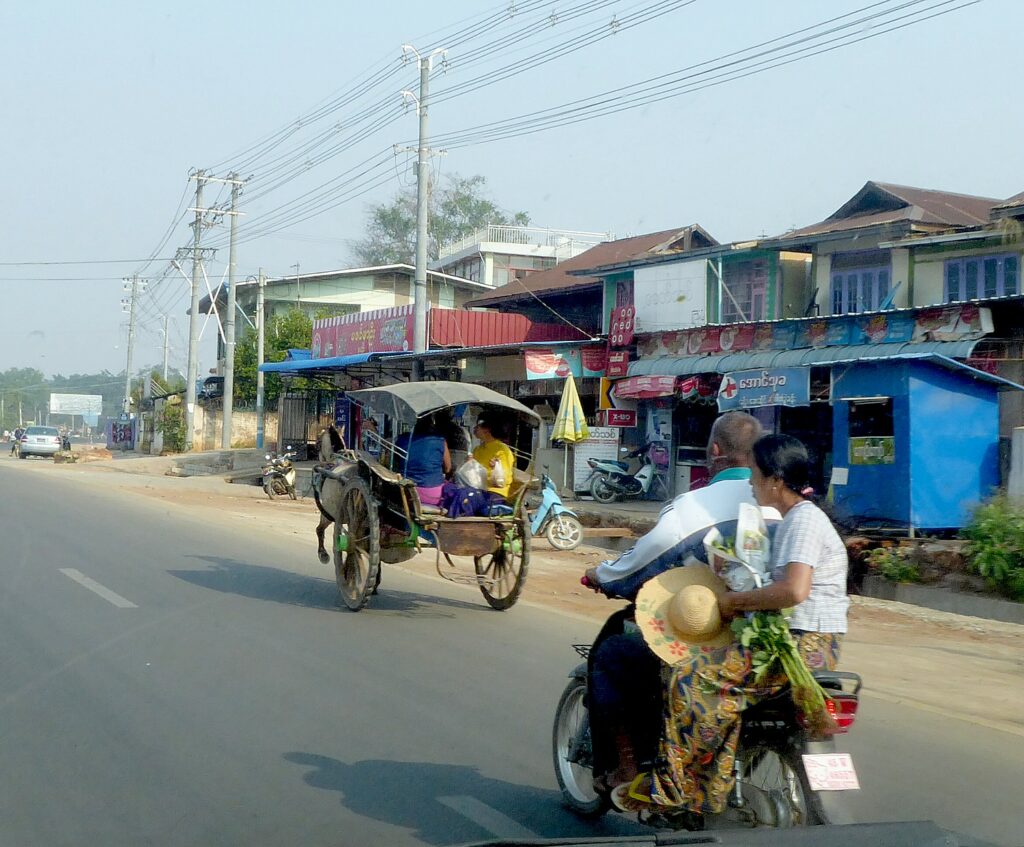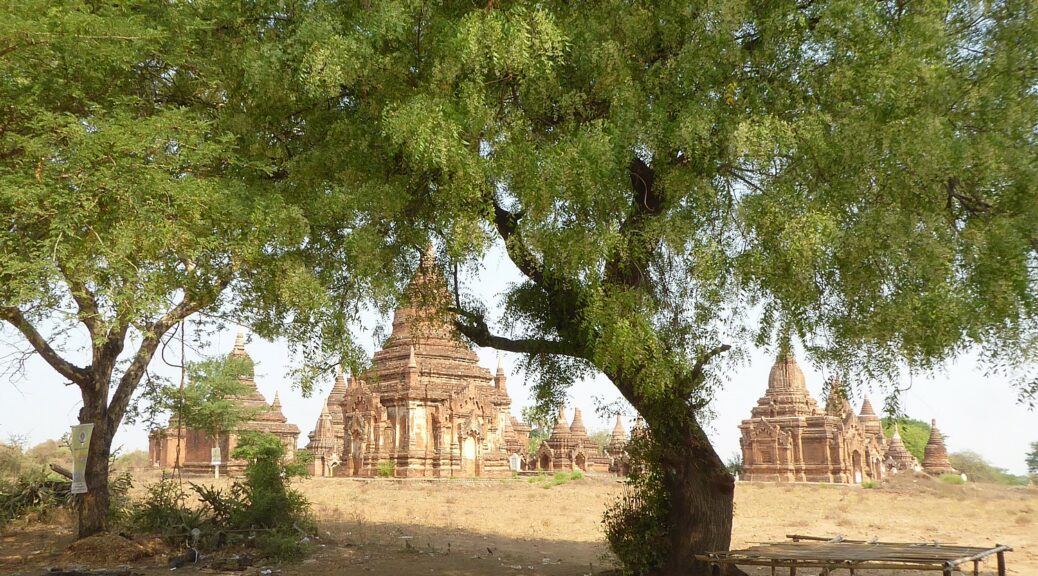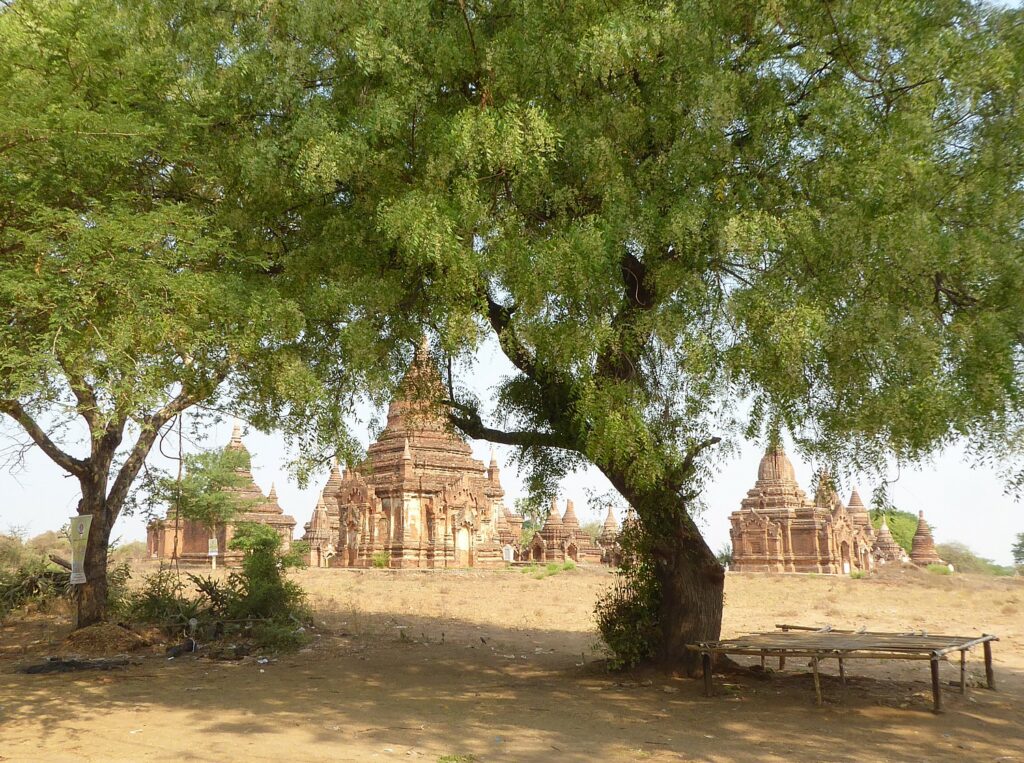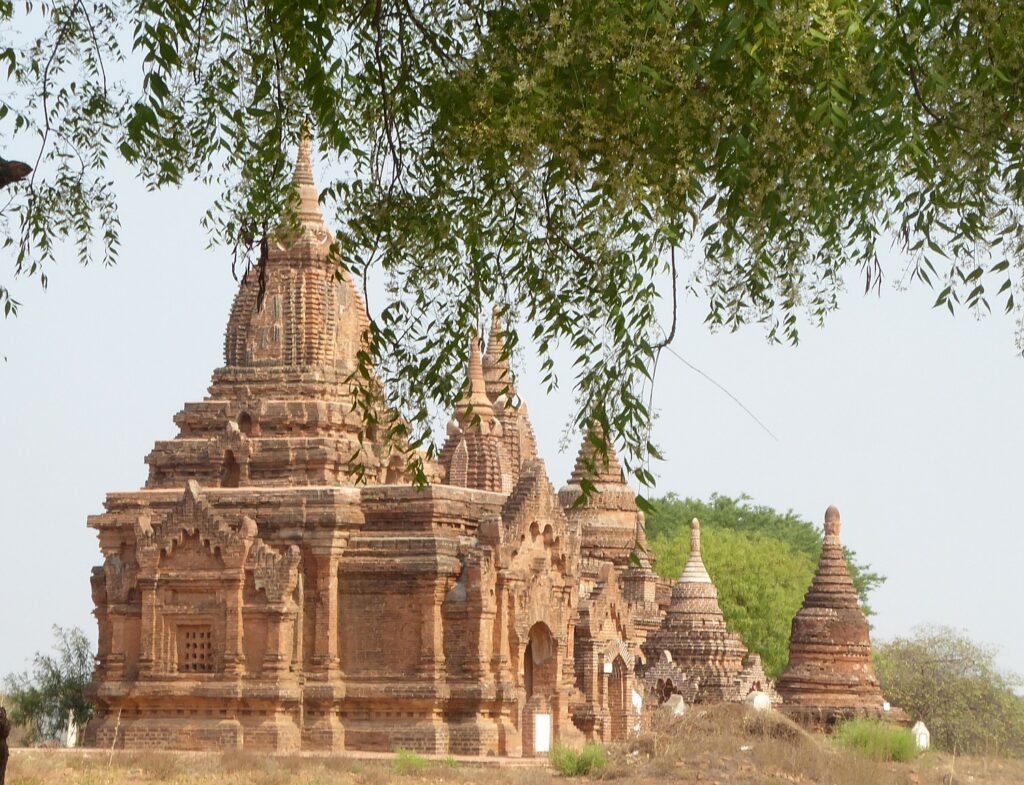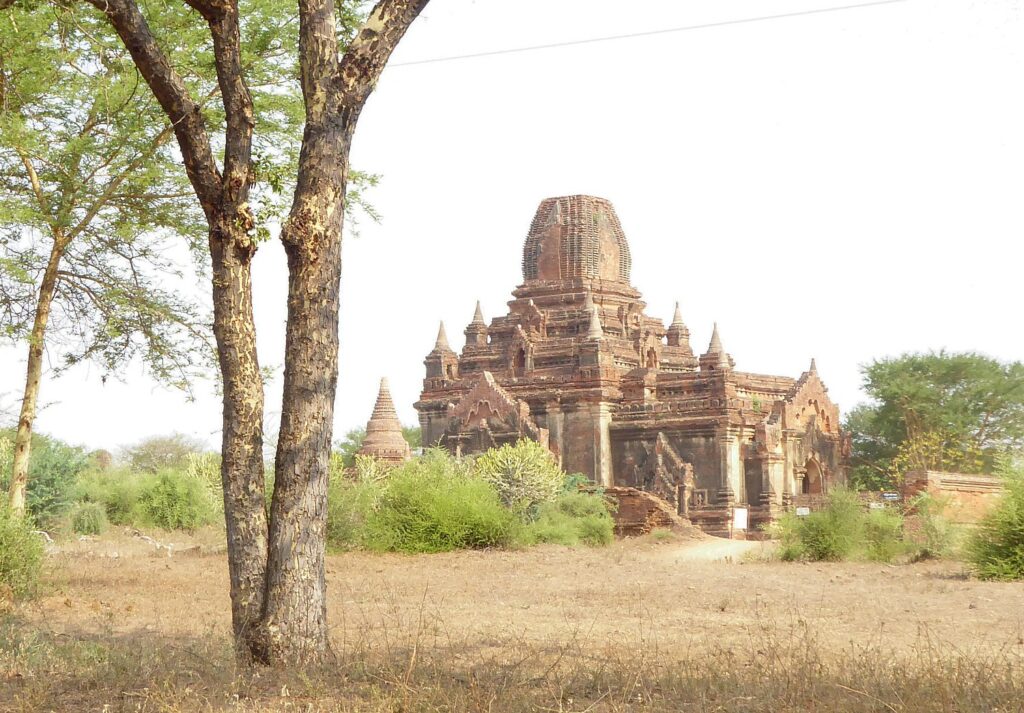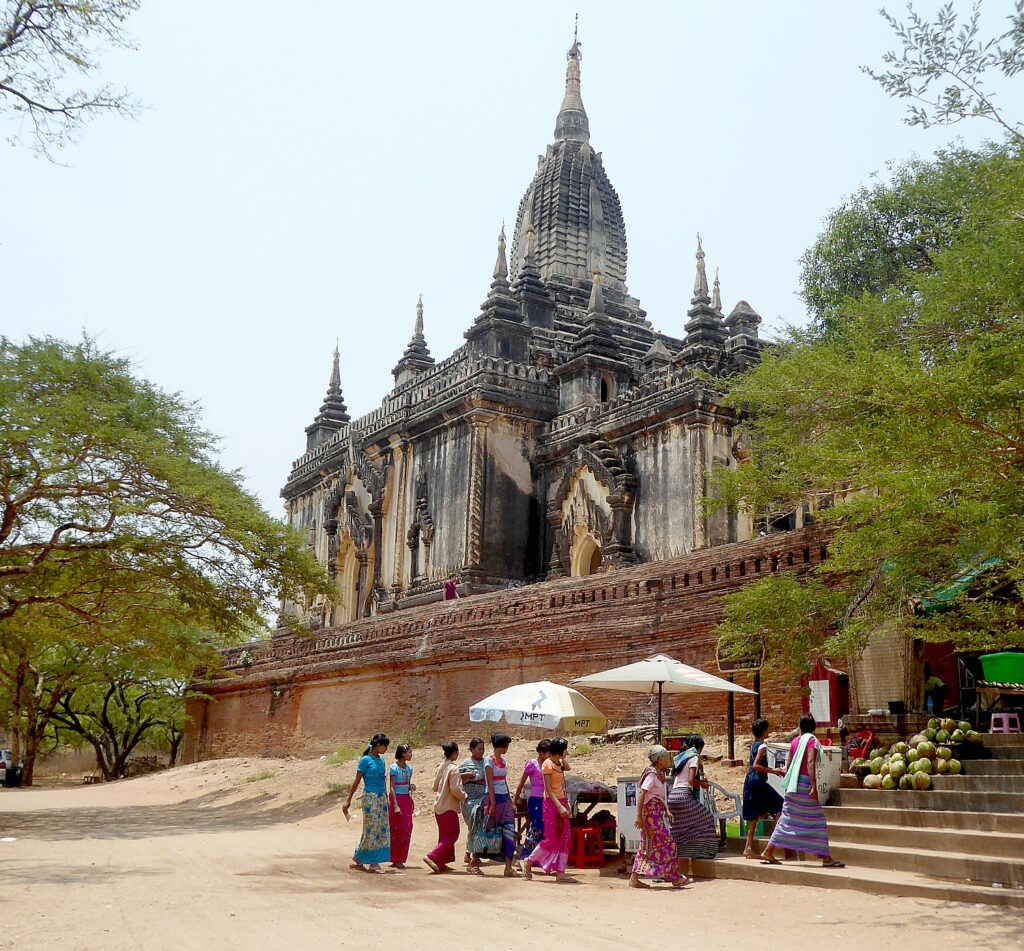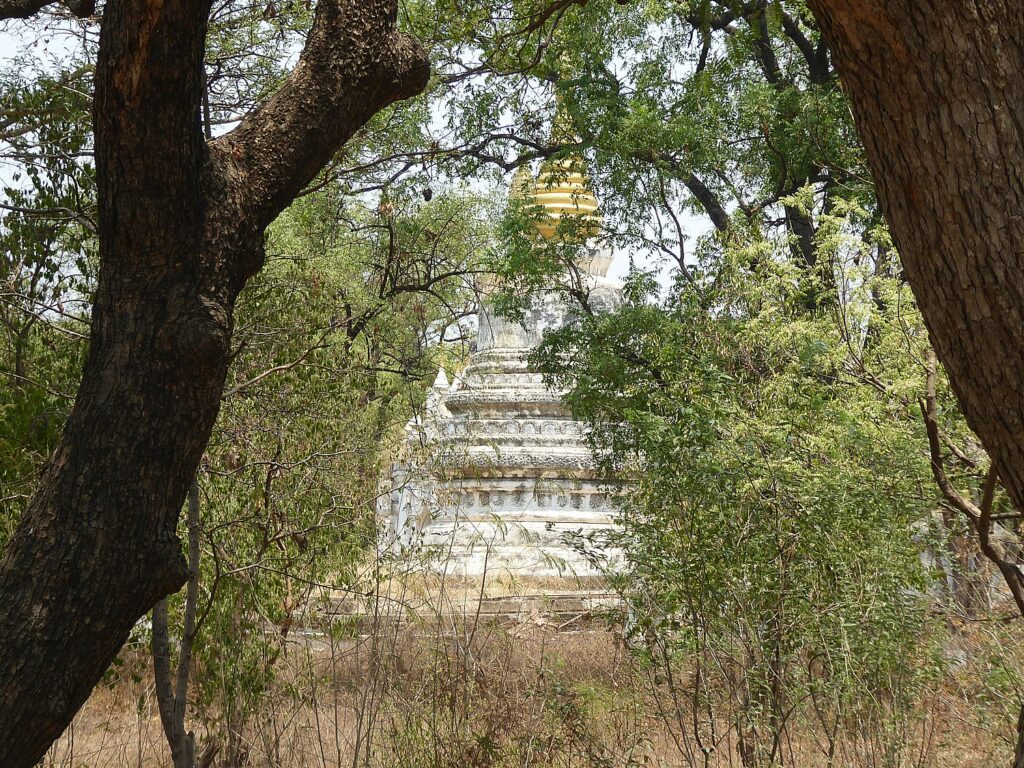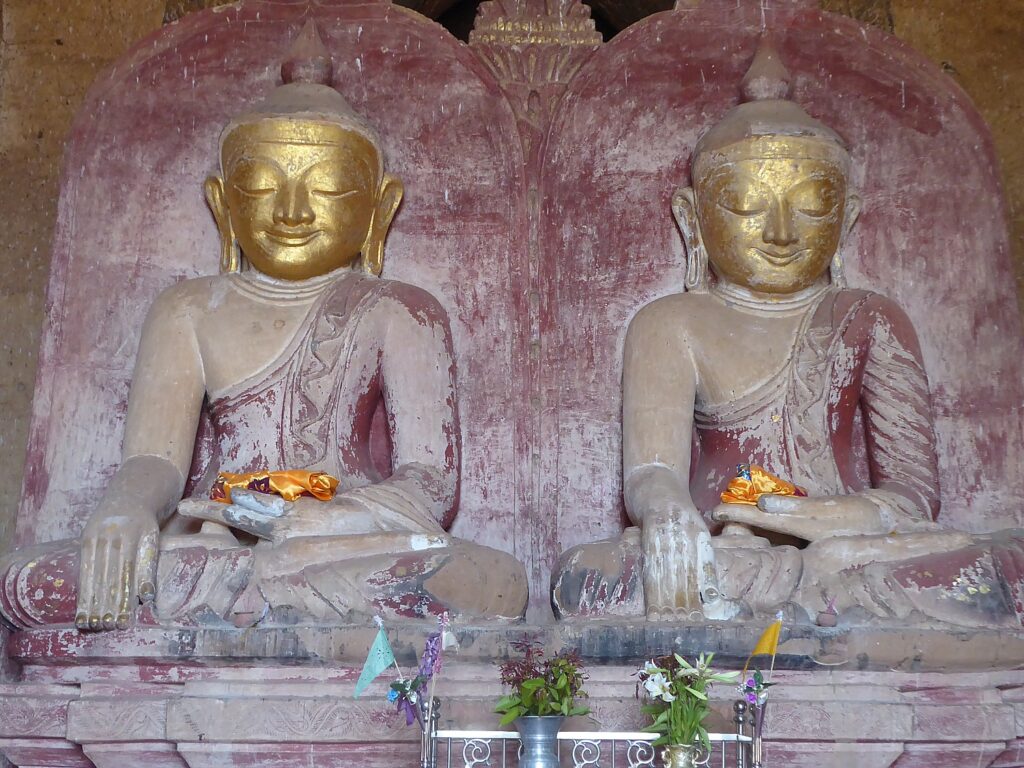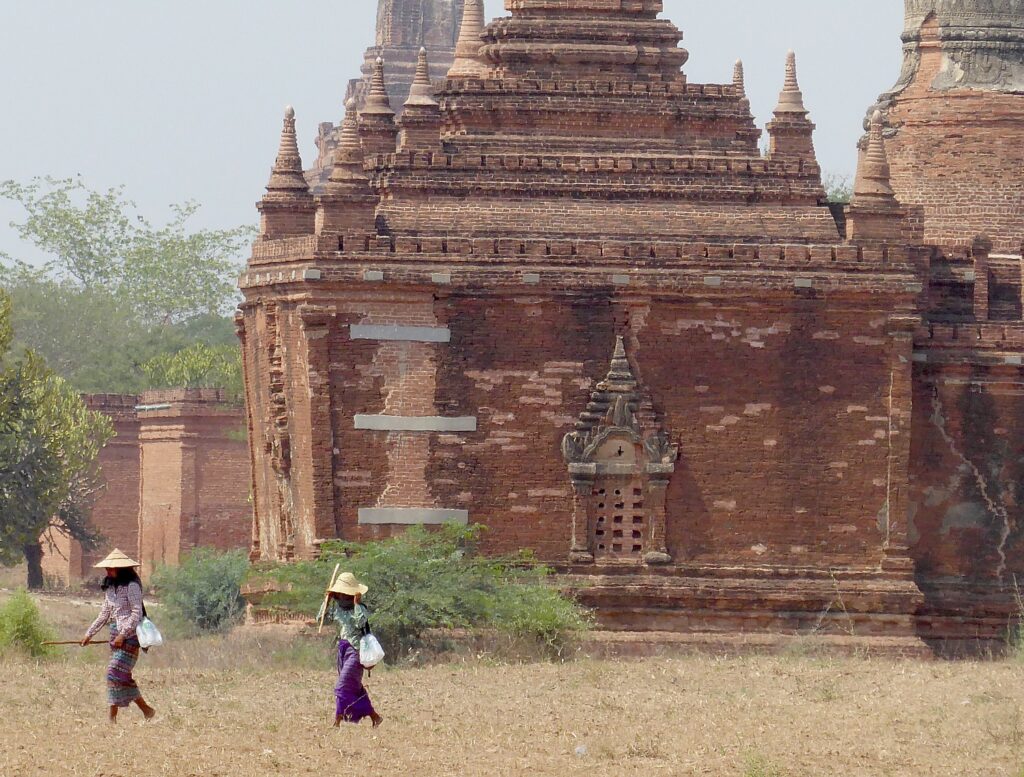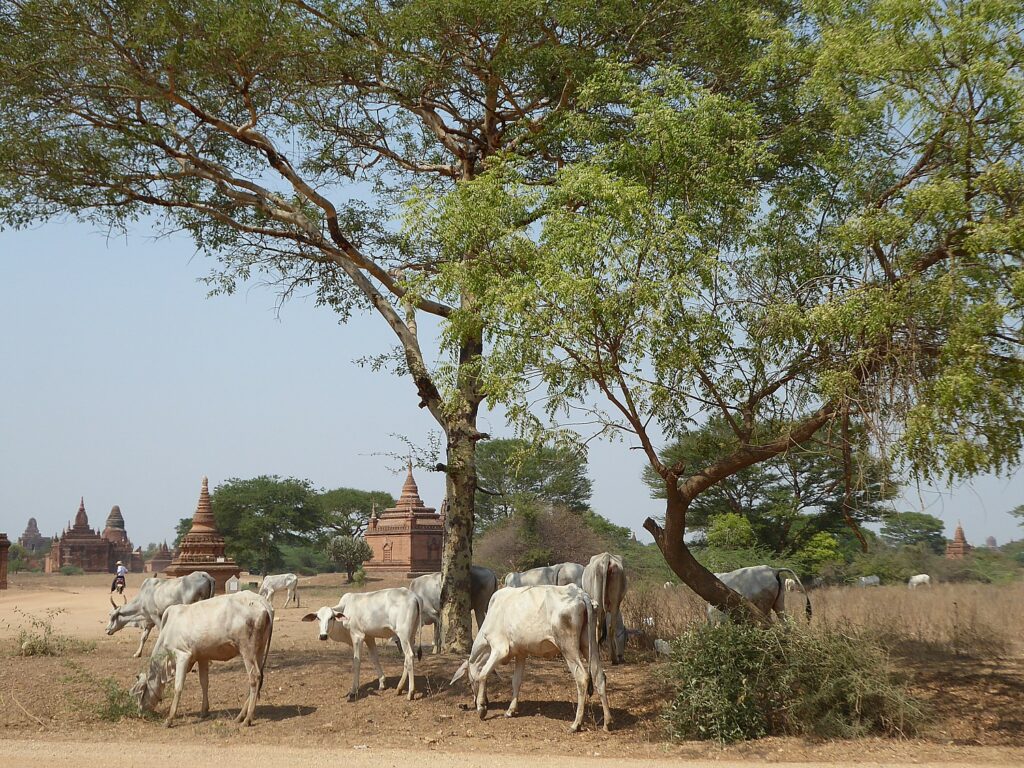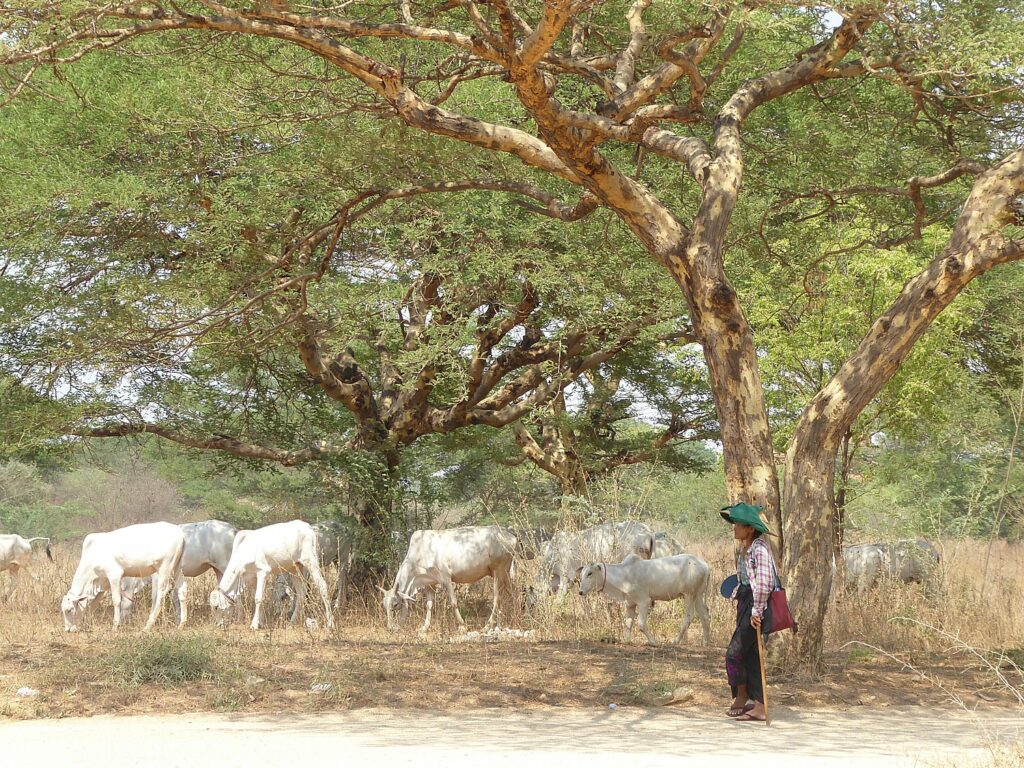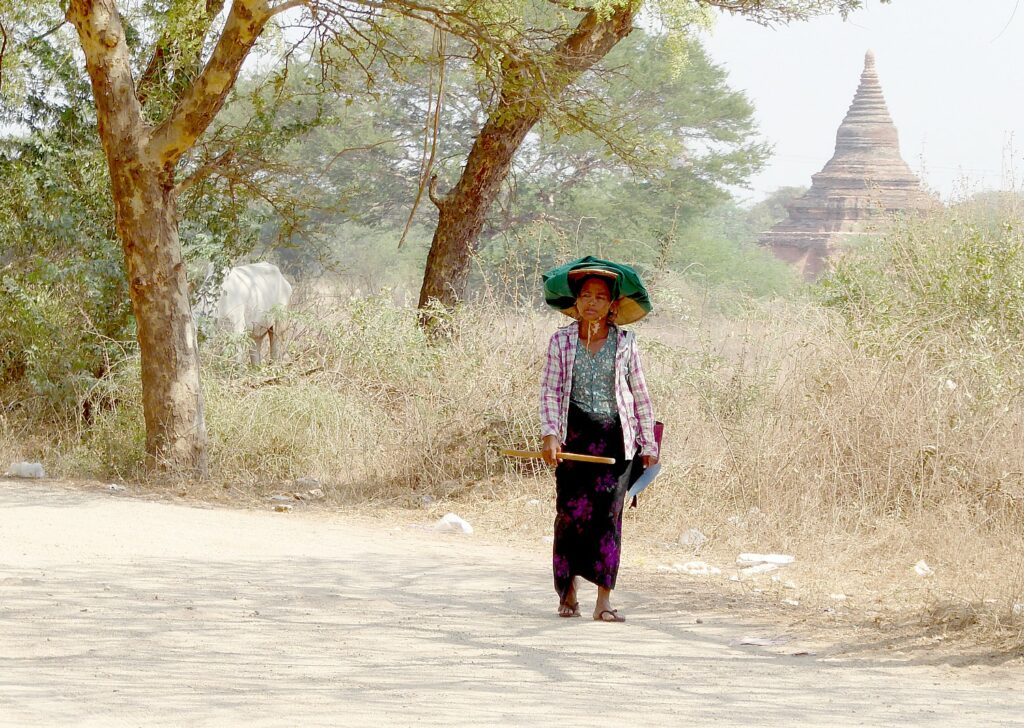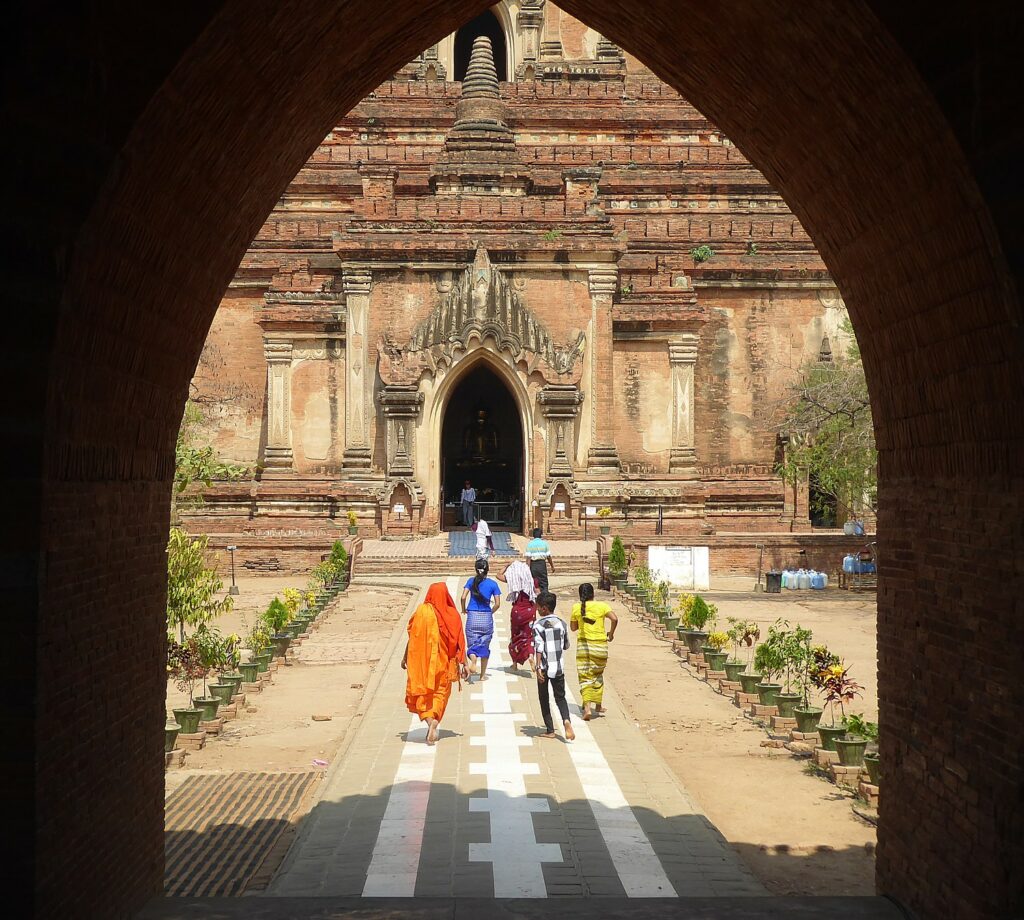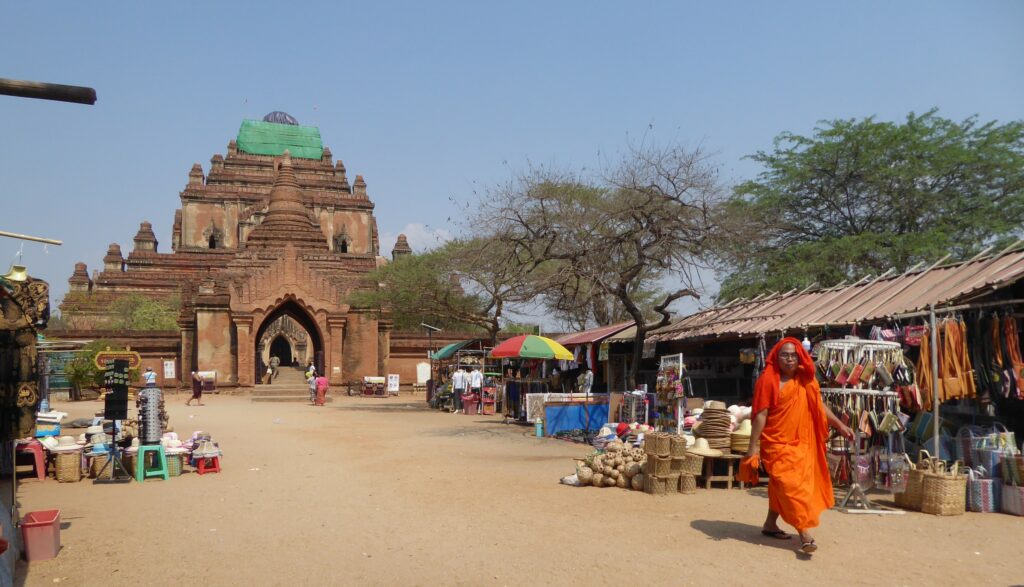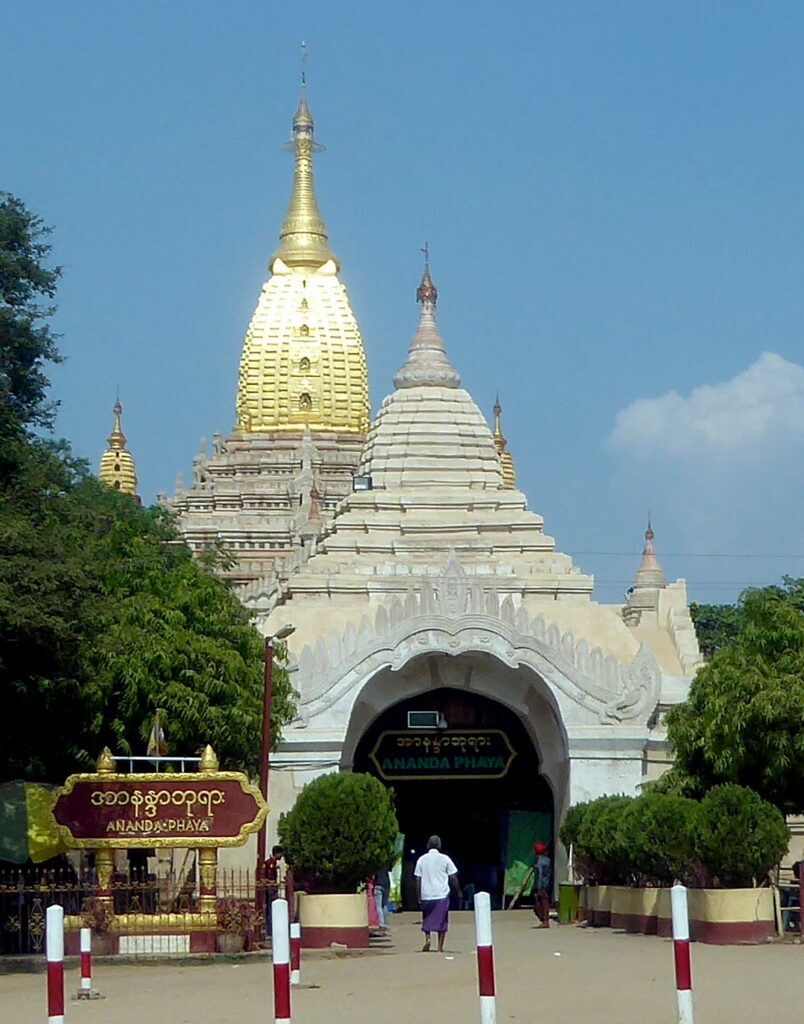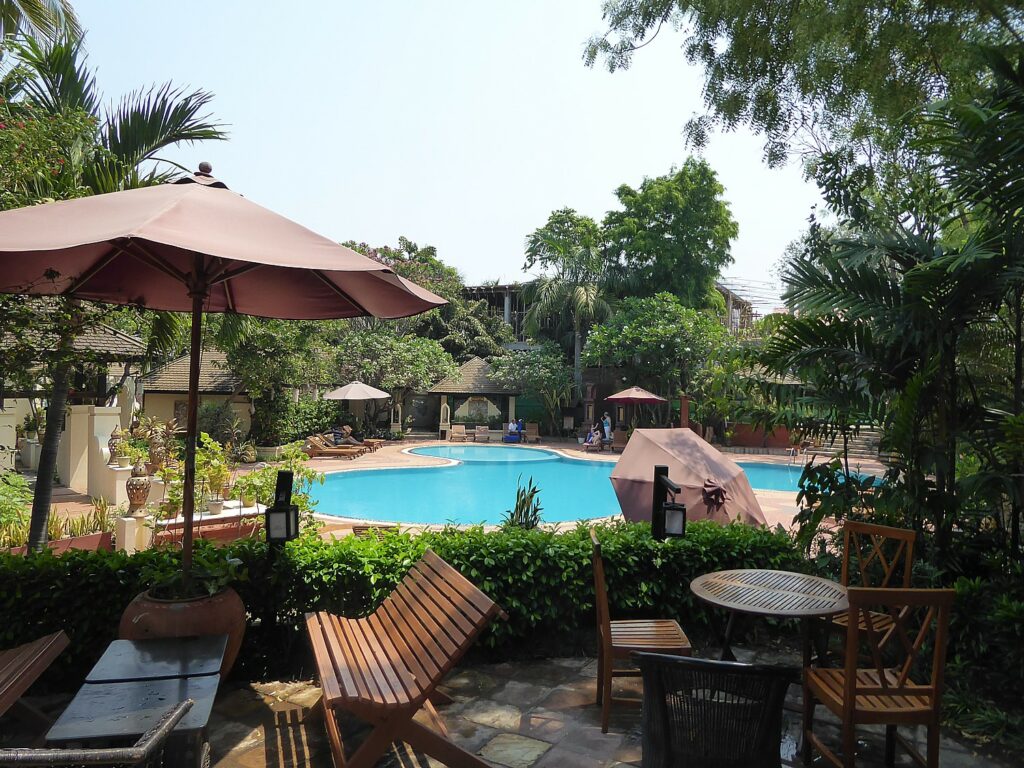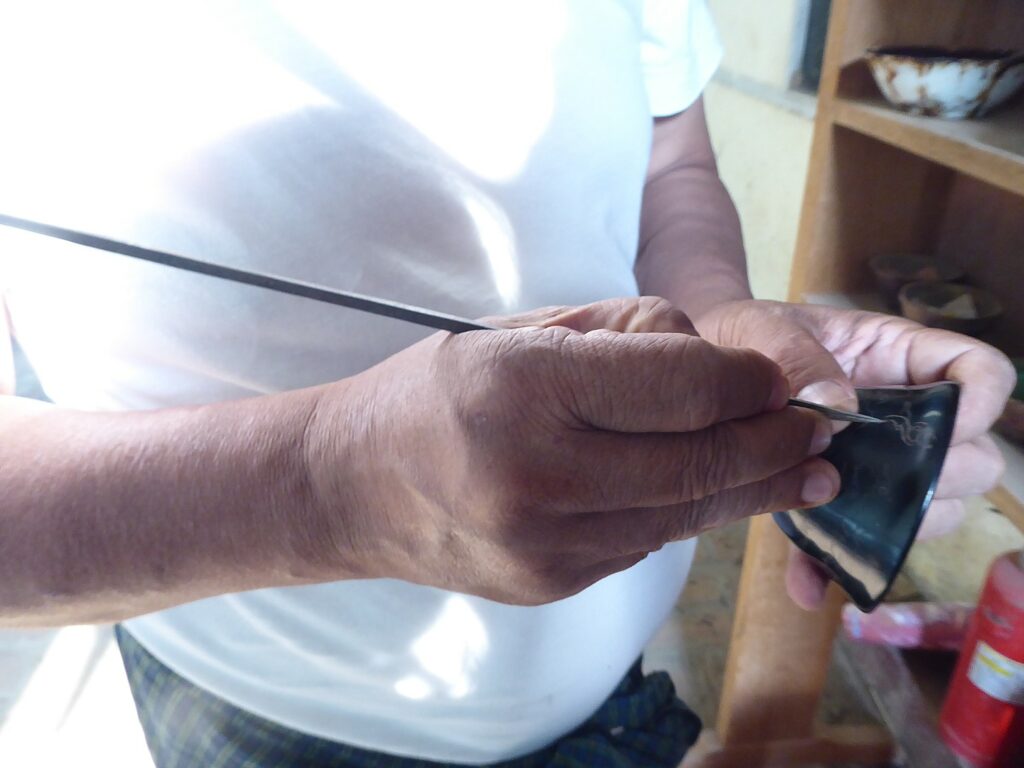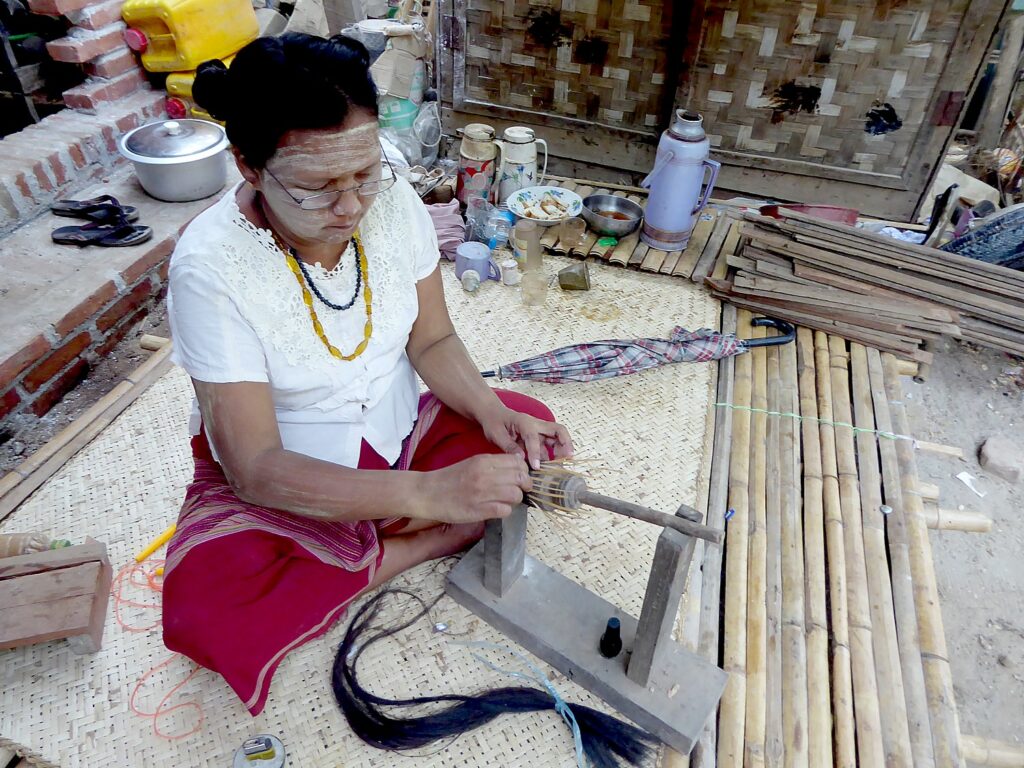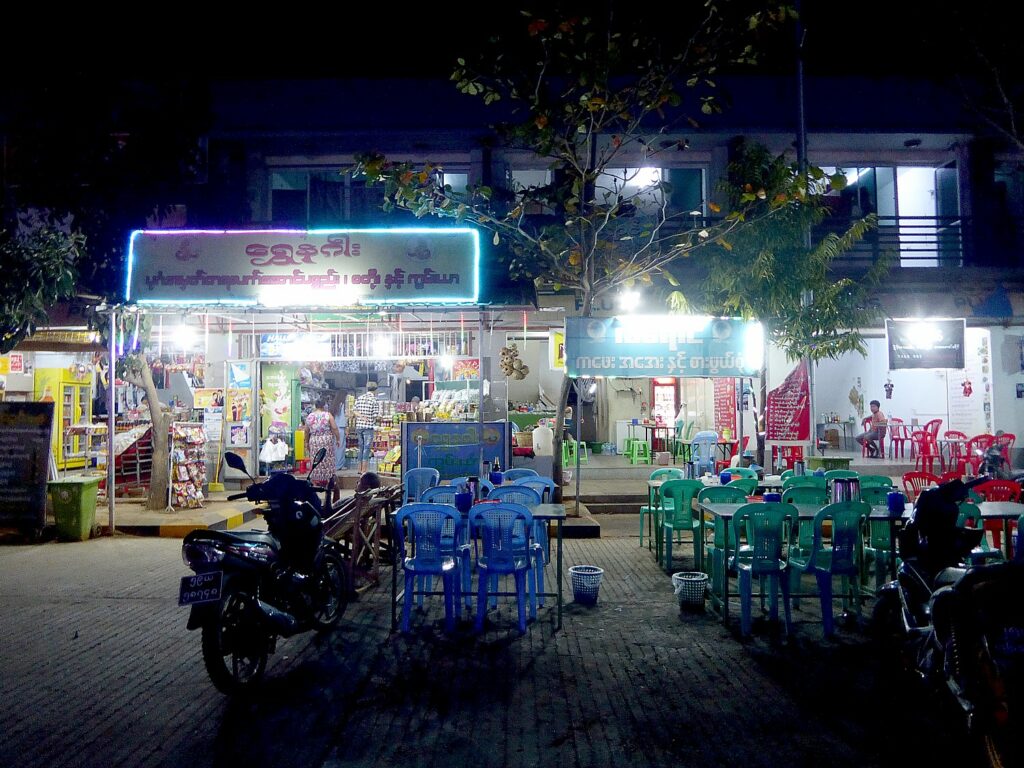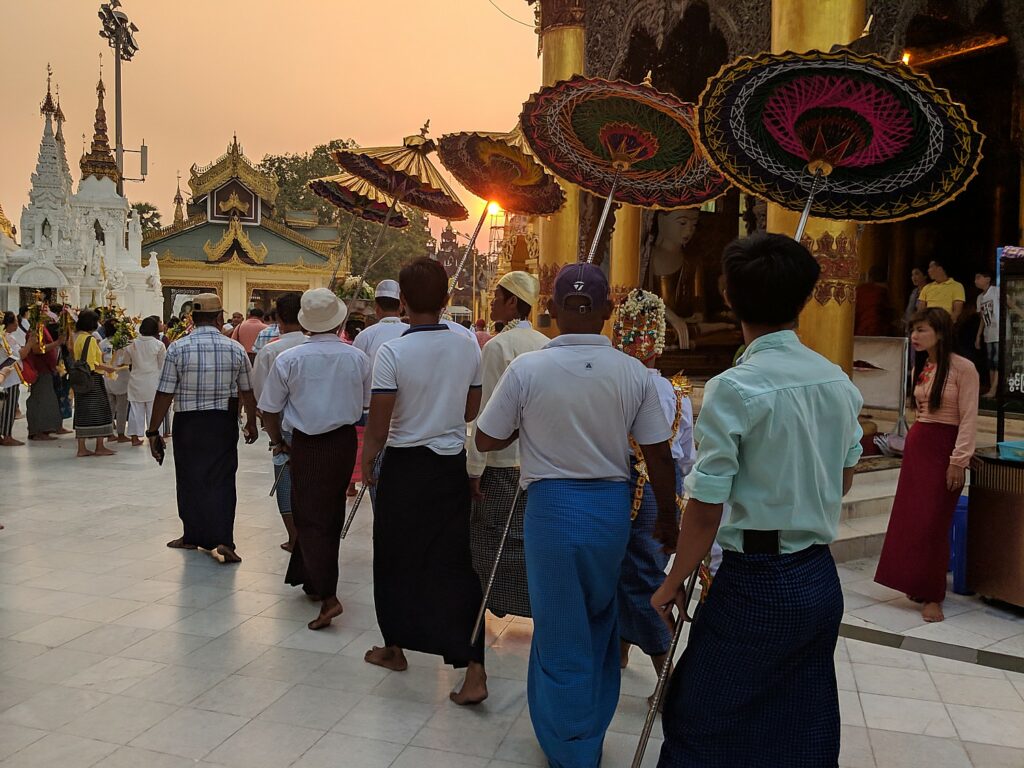
by Karen Rubin, Travel Features Syndicate, goingplacesfarandnear.com
Another perfect day in Myanmar – our fourth and final day on Leg 3 of the Global Scavenger Hunt, in which we set out from Yangon to travel about the country, making a triangle that takes me to Bagan and Inle Lake and back to Yangon to fulfill the Par 5 challenge on this a 23-day around-the-world mystery tour.
The 45-minute taxi ride from the delightful, five-star Sanctum Inle Resort on Inle Lake is wonderful – I catch people driving oxcarts and donkey carts and people riding the backs of trucks, villages and pagodas. But I have some trepidation about Heho Airport because of the snafu in booking my ticket, resolved long-distance by text to my son in New York to phone the online booking agent, as I bounced around on the overnight bus from Bagan to Inle Lake. But I arrive, am checked in to Golden Airlines without incident, and relax during the 45-minute flight back to Yangon.
The morning flight gives me time to explore Yangon which I didn’t have when we first arrived on Leg 3 of the Global Scavenger Hunt from Vietnam, and were given our challenges, to travel around Myanmar and return to the Sule Sangri-la Hotel by the 6 pm deadline.
Leaving the airport, I attempt to take the public bus back into downtown, but after two buses pass me by, I take a taxi instead.
Riding back, I review a brochure I picked up at the airport which mentions a synagogue in Yangon – in fact, the last synagogue in Myanmar. So I resolve to find it.
It turns out it is only a 15-minute walk from our hotel, the Sule Sangri-la, bringing me through various bustling market streets and shopping districts. The Musmeah Yeshua Synagogue itself is set on a busy market street where there are chickens and fish for sale – the chickens clucking, the fish squirming to get out of their container (I see one jump out of its container), the rich scent of spices, and every other manner of item you can imagine.

By the time I arrive at Musmeah Yeshua Synagogue, it is 1:40 pm – which proves extremely lucky because it closes to visits at 2 pm (open daily except Sunday). Inside, it is a lovely synagogue in the Sephardic style, built in 1896. At one point, the Jewish community in Yangon numbered 2500 before the mass migration of WWII; today, there are only 5 families (about 30 people). The Samuels, one of the last remaining Jewish families, has maintained the synagogue for generations, a plaque notes.
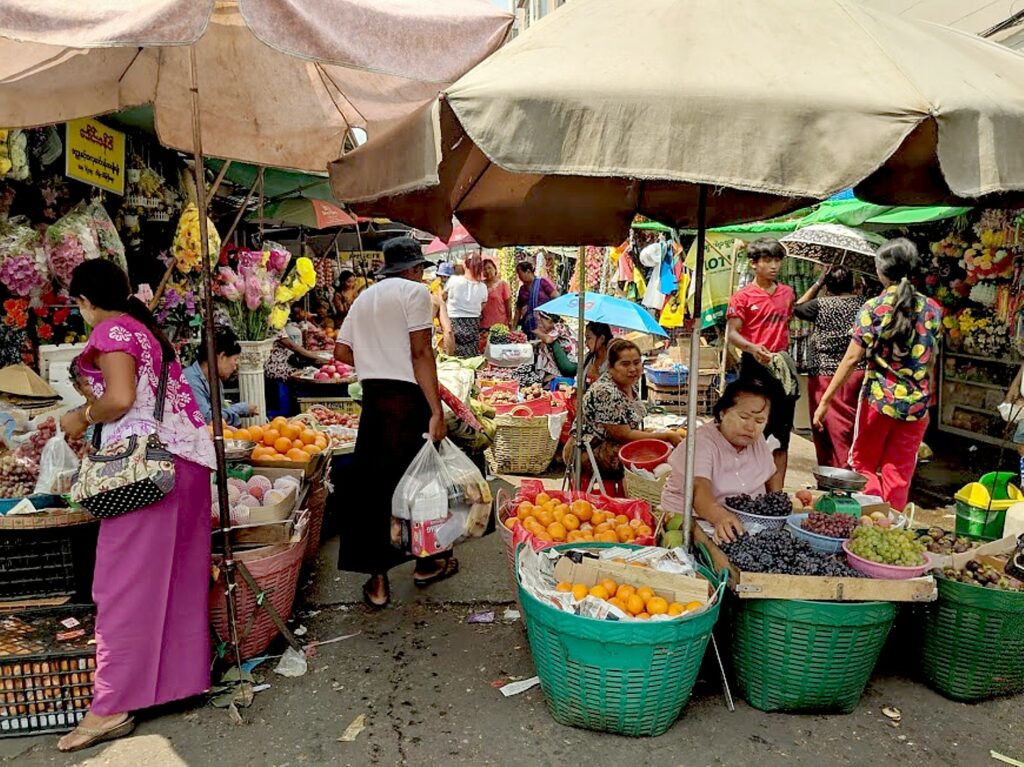
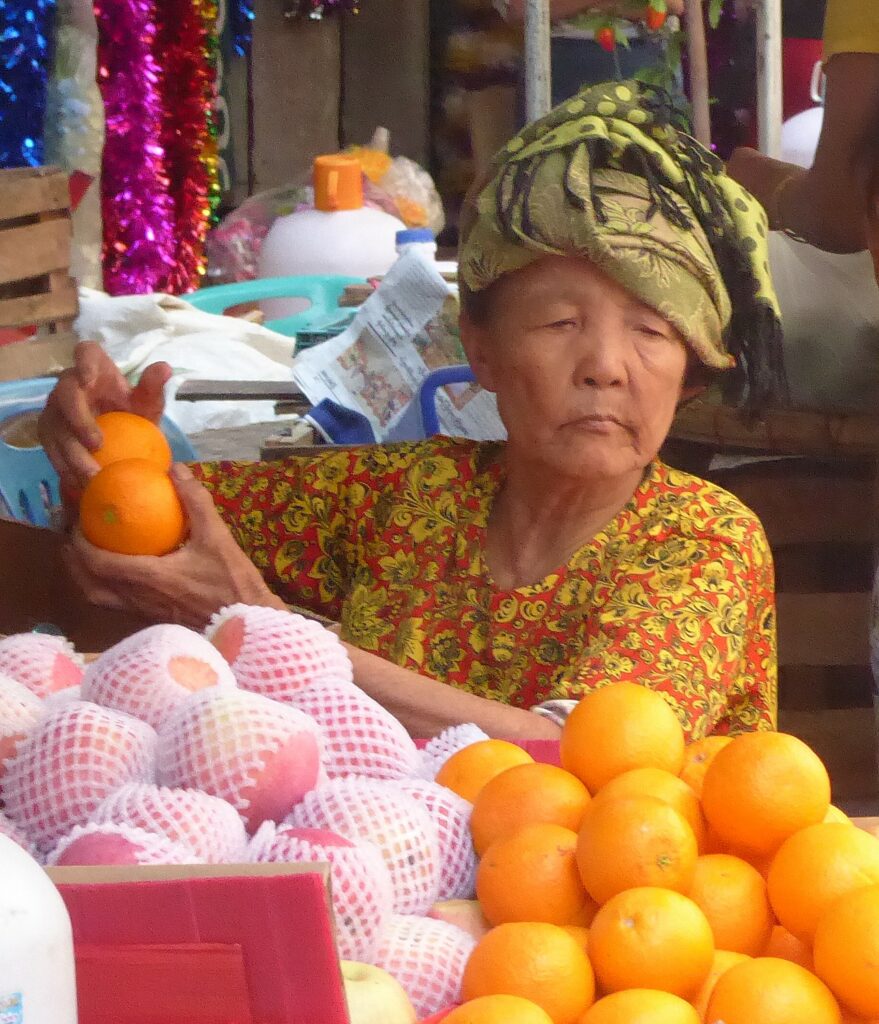
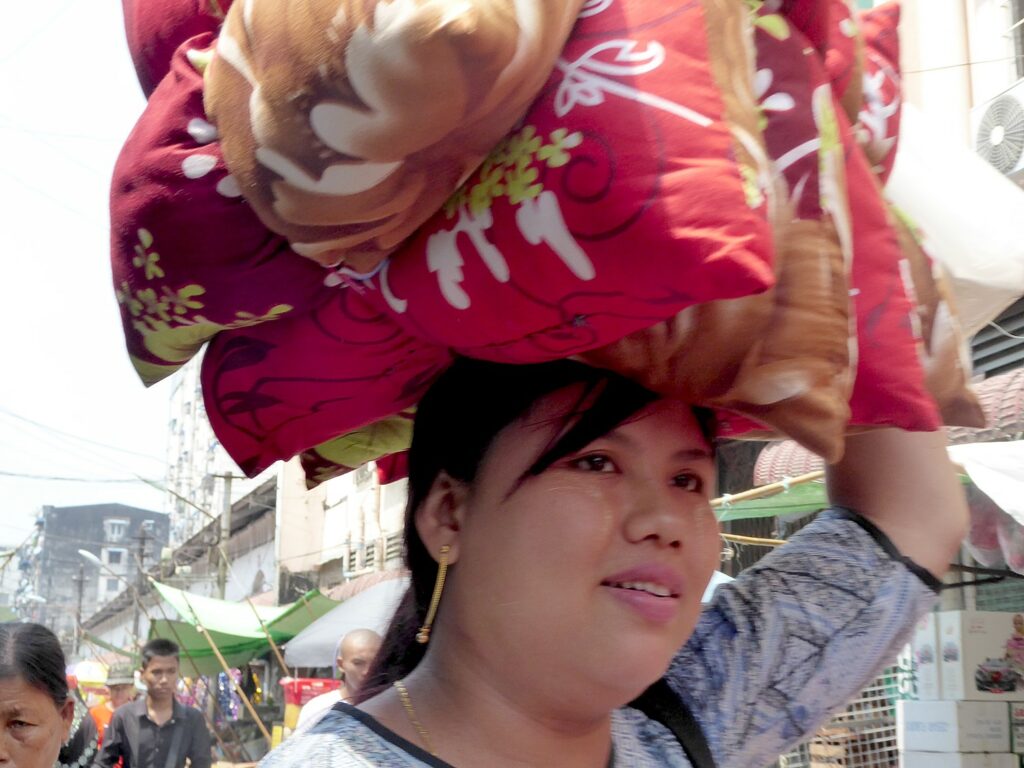

Perhaps not surprising, a short distance from the synagogue is Bogyoke Aung San Market, which since 1926 has been the city’s major marketplace. I am surprised to see all the sellers of jade and jewelry (which is what the market is known for), as well as traditional longyi, and just about anything else you can think of. I come upon a seller of interesting post cards, and find the post office on the third level (one of my traditions of travel is to send home postcards, which not only have stamps, but mark the date and give some visual and personal notes). Also, I have been impressed by the absolute lack of political messaging in the streets, but here in the market is one art seller who has images of Myanmar’s most famous leader, Aung San Suu Kyi. Wondering about the name, I later learn that Bogyoke Aung San market is named for her father, Bogyoke (General) Aung San.

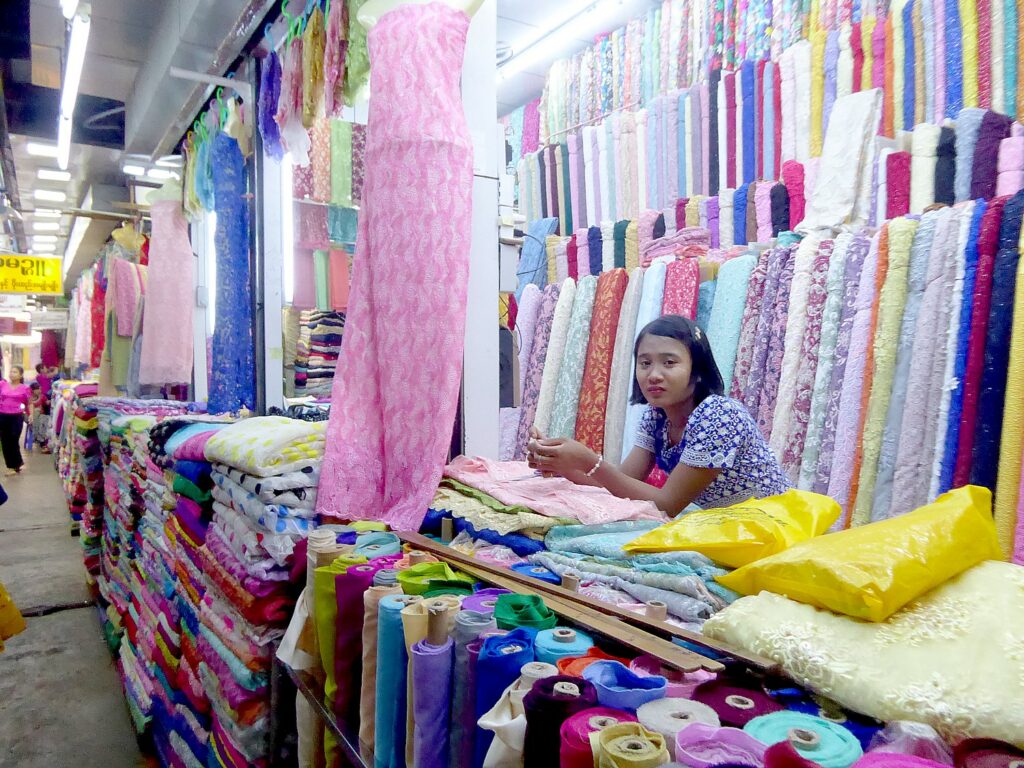
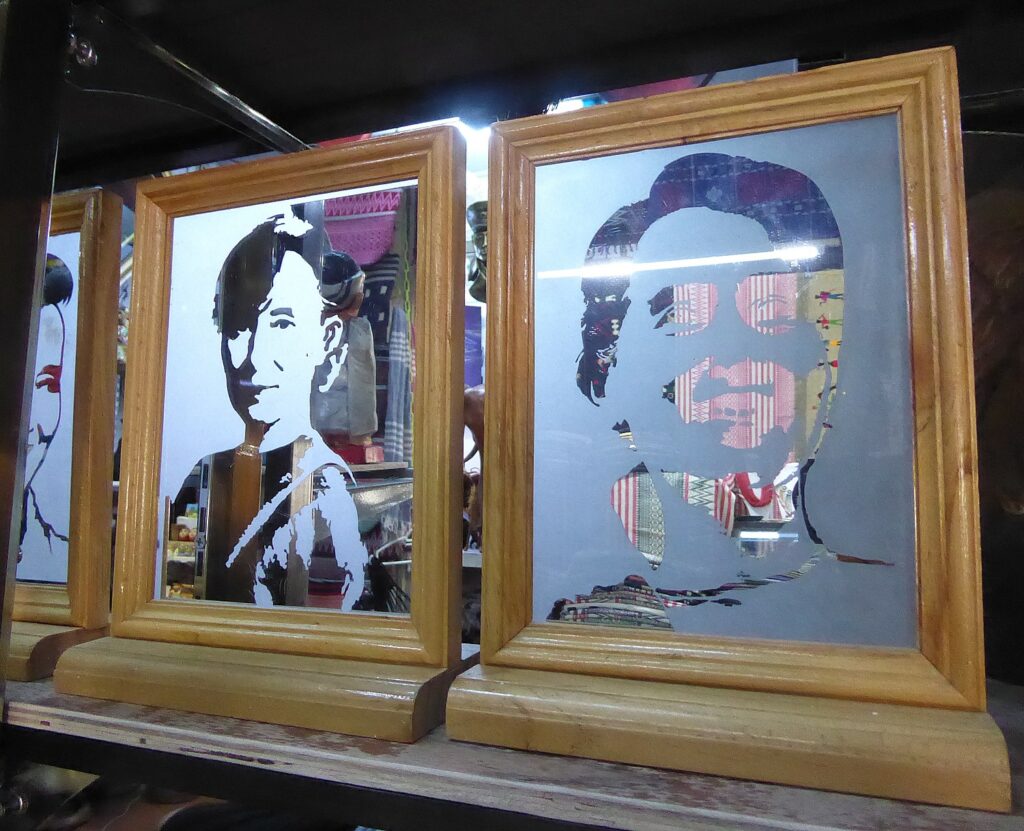
Shwedagon Pagoda
I walk back to the hotel, just a few blocks away, to refresh (it is 104 degrees), in order to prepare for a visit to Shwedagon Pagoda, which I have been saving for the late afternoon (one of the mandatory scavenges of the Global Scavenger Hunt is to visit at dawn or dusk), so that I will be there at dusk (but back at the hotel by the 6 pm deadline for the scavenges), but nothing could have prepared me for the experience of seeing it.
Just as I am about to leave, my teammate, Margo, who had traveled to Mandalay when I went on to Inle Lake, walks in. She relates that after a snafu with her airline ticket, she had to hire a taxi to drive her back to Yangon (ironic because I couldn’t get the airline to cancel my ticket when I changed my plan to go to Inle Lake instead, but such mishaps turn into marvelous adventures). We go off together to Shwedagon Pagoda, which is located west of the Royal Lake, on the vast, 114 -acre Singuttara Hill.
Margo cleverly hires a guide to show us around this vast, vast complex and it is fascinating: this was the first pagoda in the world, he tells us.
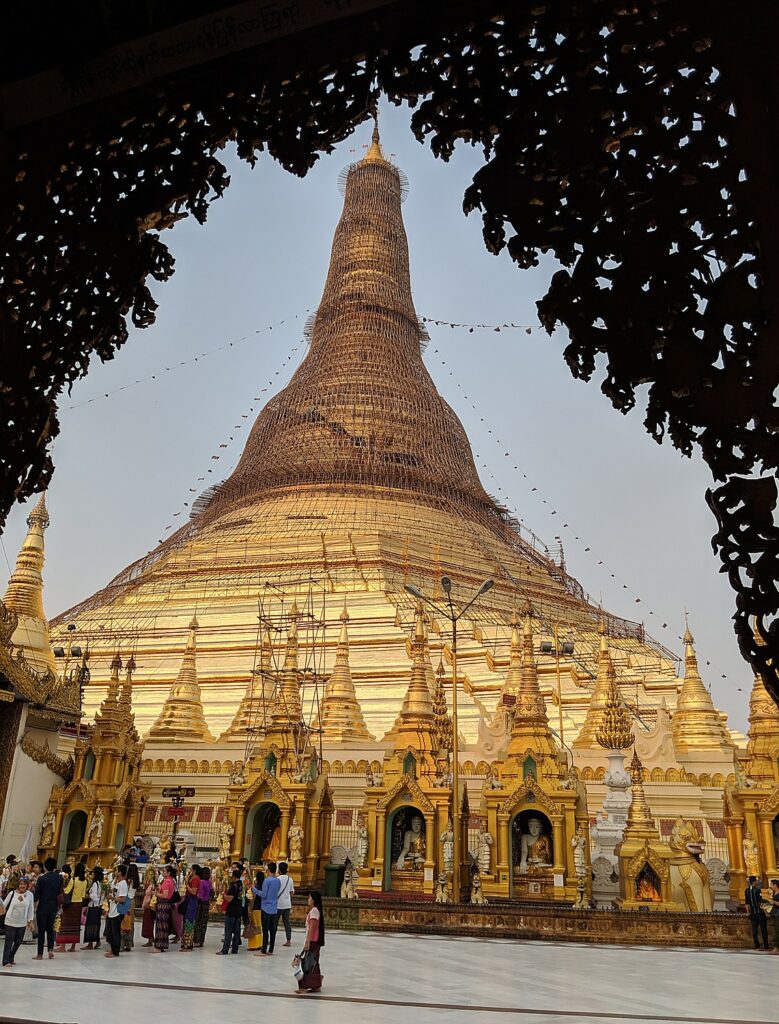
Indeed, the Shwedagon Pagoda is Myanmar’s most sacred and impressive Buddhist site. Dating back almost 2500 years, the pagoda enshrines strands of Buddha’s hair and other holy relics. It is breathtaking.
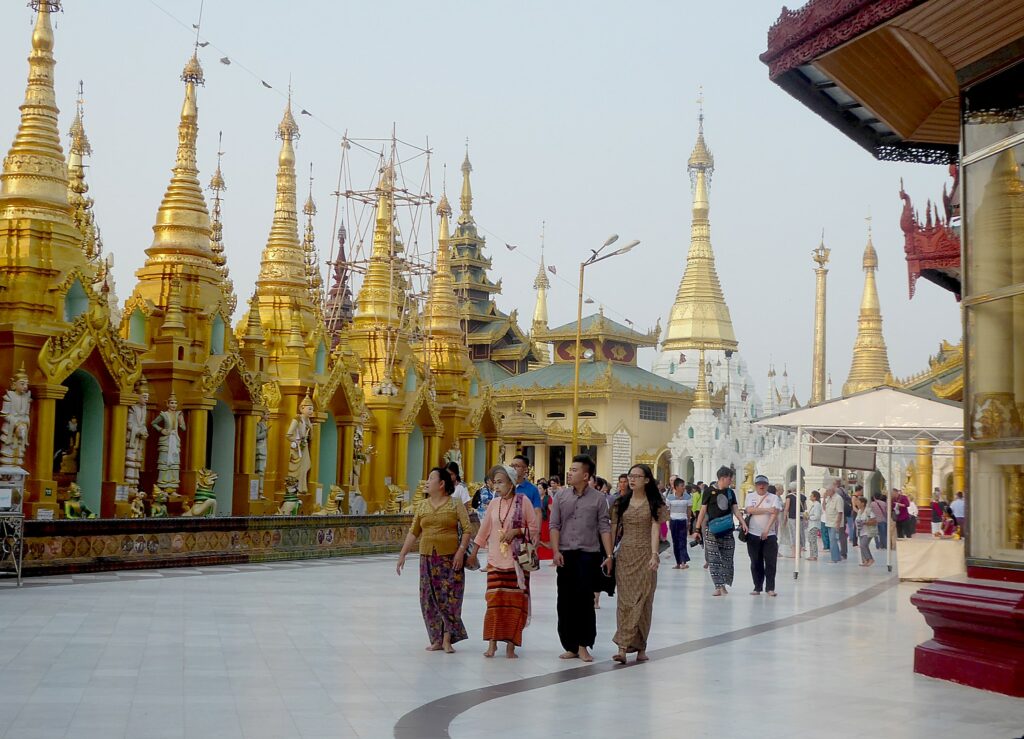
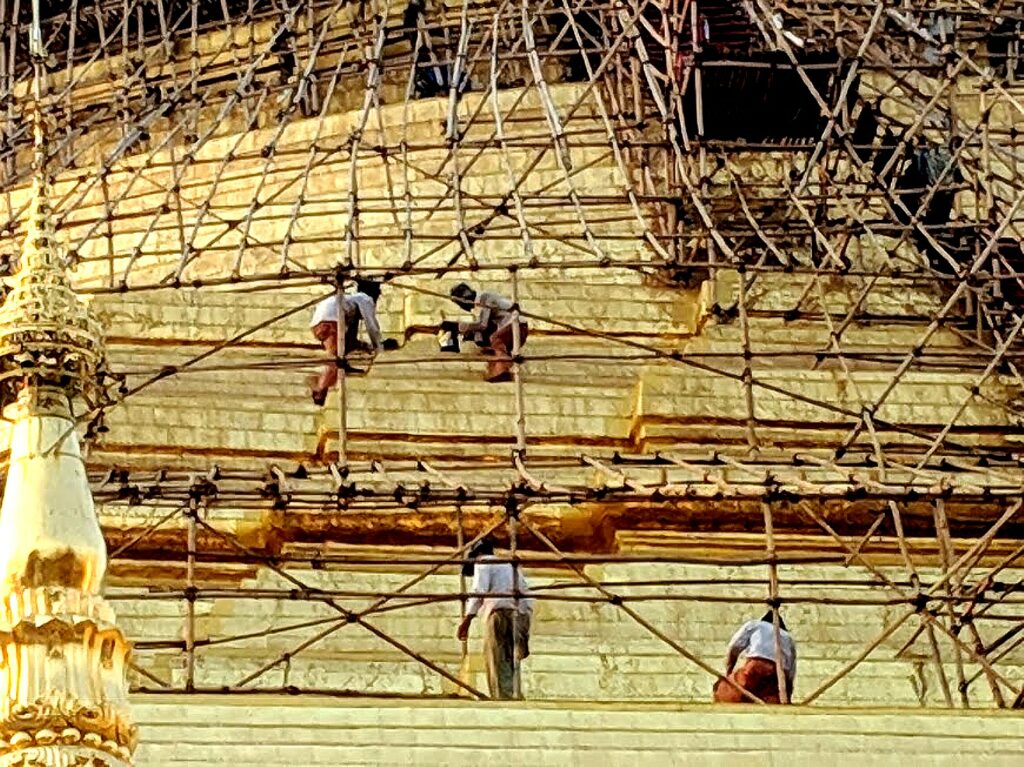
The Shwedagon Pagoda stands 326
feet high, its dome covered in 60 tons of gold (we watch workmen on scaffolding replacing some of the
gold plates). At the very top, too small to be appreciated from where we stand
at the base, is an orb, 22 inches high and 11-inches wide, encrusted with 4531
diamonds, the largest of which is a 72 carat diamond. The base is
surrounded by 64 small pagodas with four larger ones in the center of each side.
There also are four sphinxes, one at each corner, with six leogryphs (a lion-like
creature). Projecting beyond the base of the Pagoda. are Tazaungs (shrines) in
which are images of the Buddha and where offerings are made.
There are also figures of elephants crouching
and men kneeling and pedestals for offerings all around the base. In front of
the 72 shrines surrounding the base of the Pagoda, there are images of lions,
serpents, ogres, yogis, spirits, or Wathundari. Among the most dazzling art is
a Jade Buddha. There are also mystical and mysterious places, like the well
where Buddha’s sacred hair was washed and Buddha’s foot print.

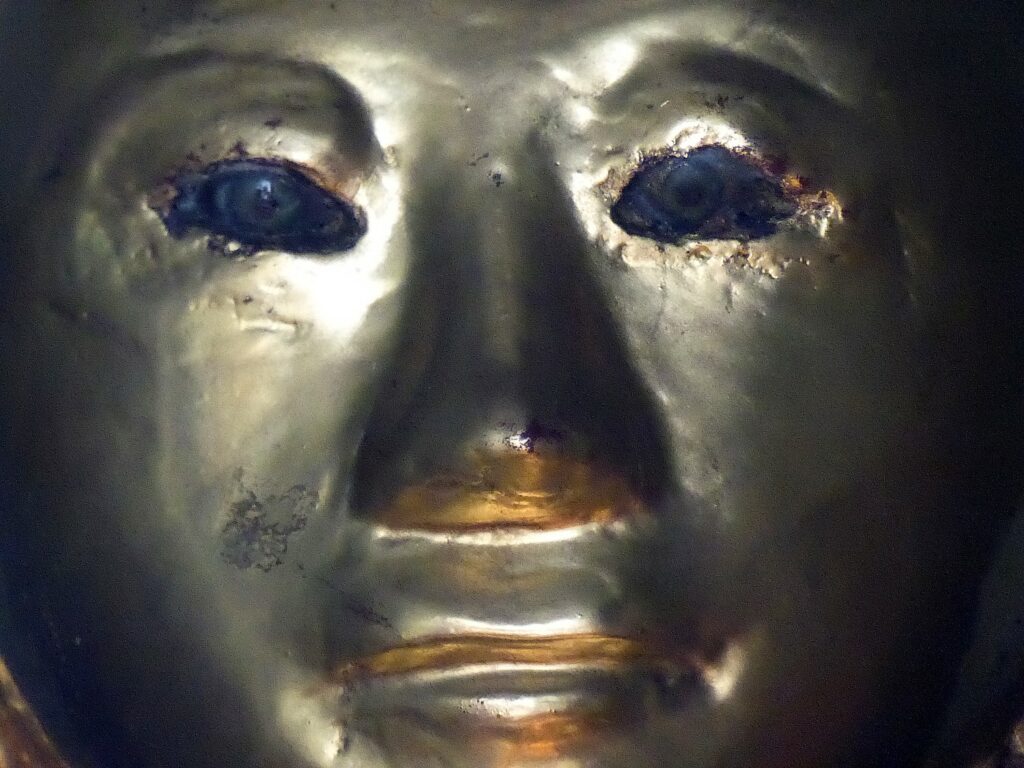
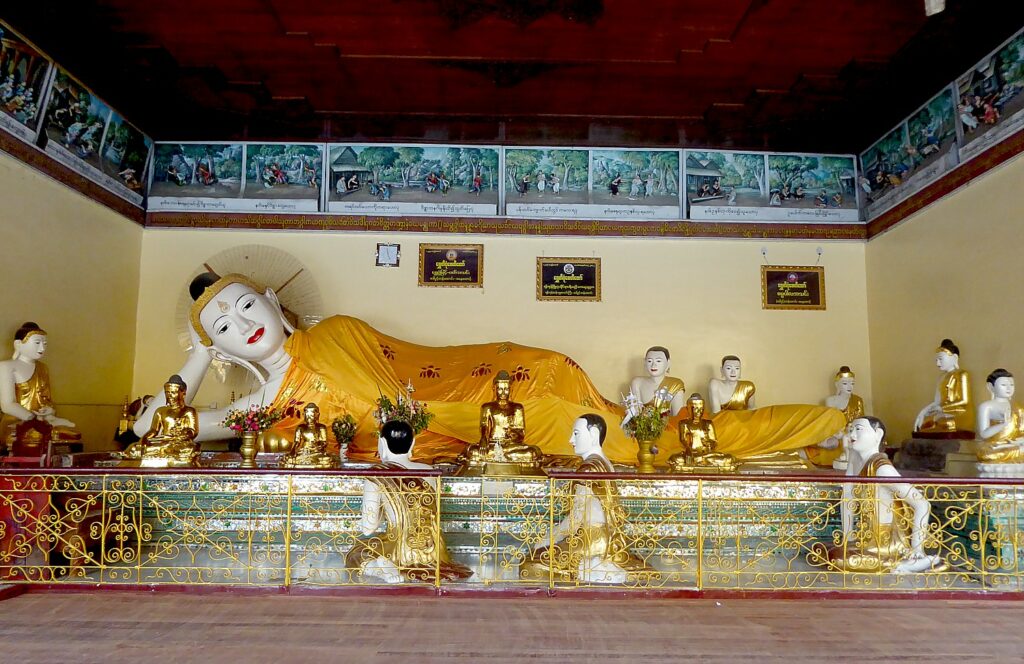
Representing the highest achievements of Myanmar’s sculpture, architecture and art, there are hundreds of colorful temples, stupas and statues spanning nearly 2500 years. It is known as Shwedagon, “the Sanctuary of the Four,” because it contains relics of four Buddhas who had attained Enlightenment.

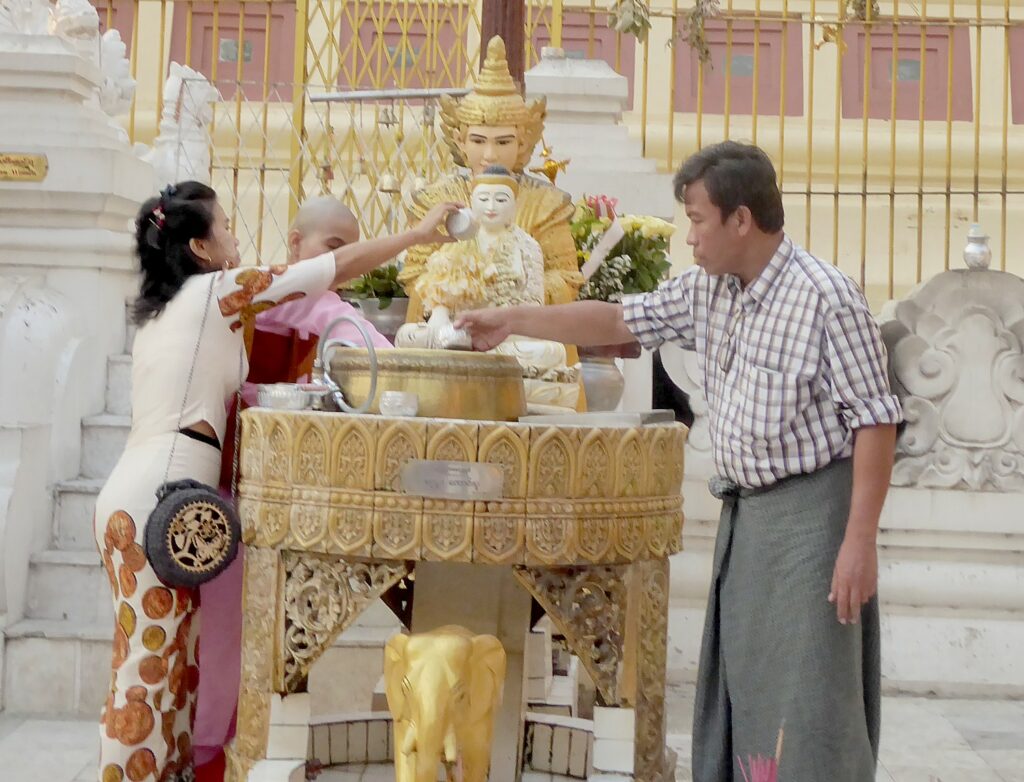
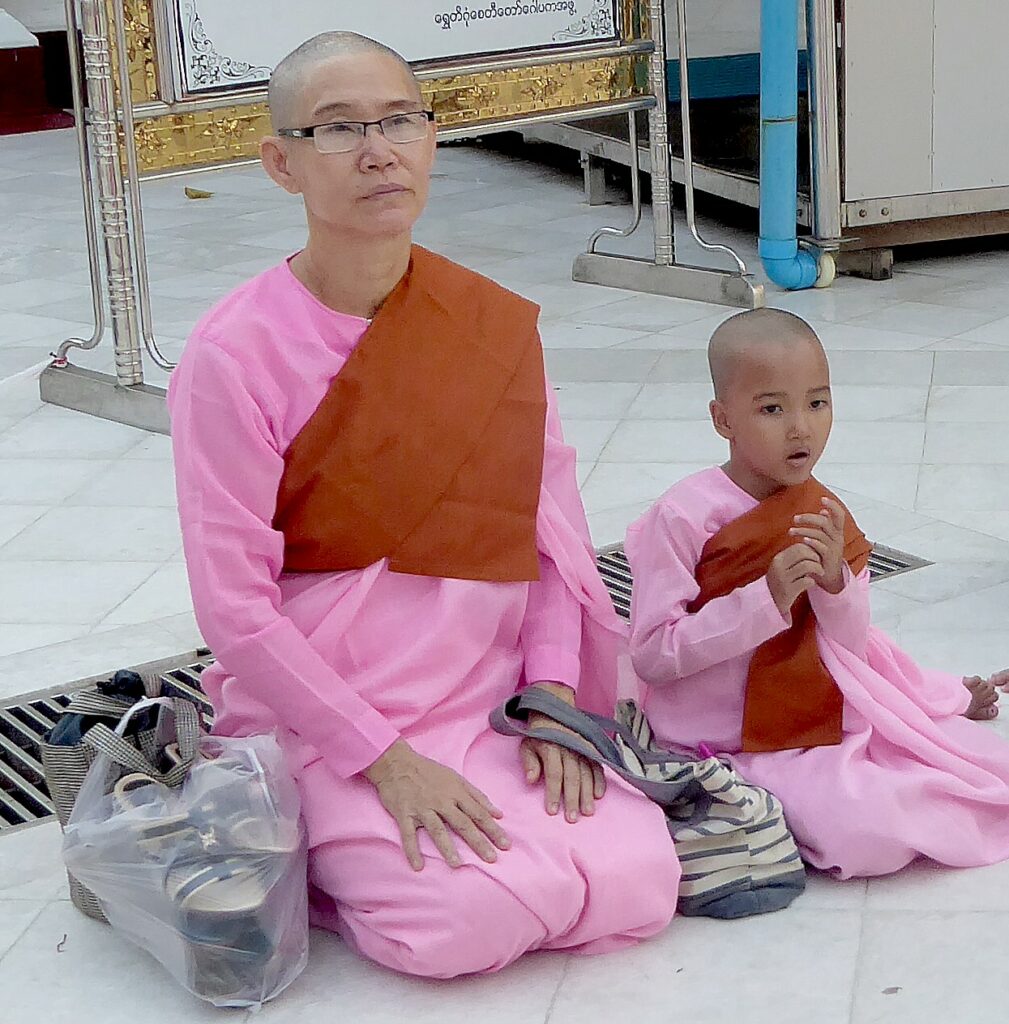
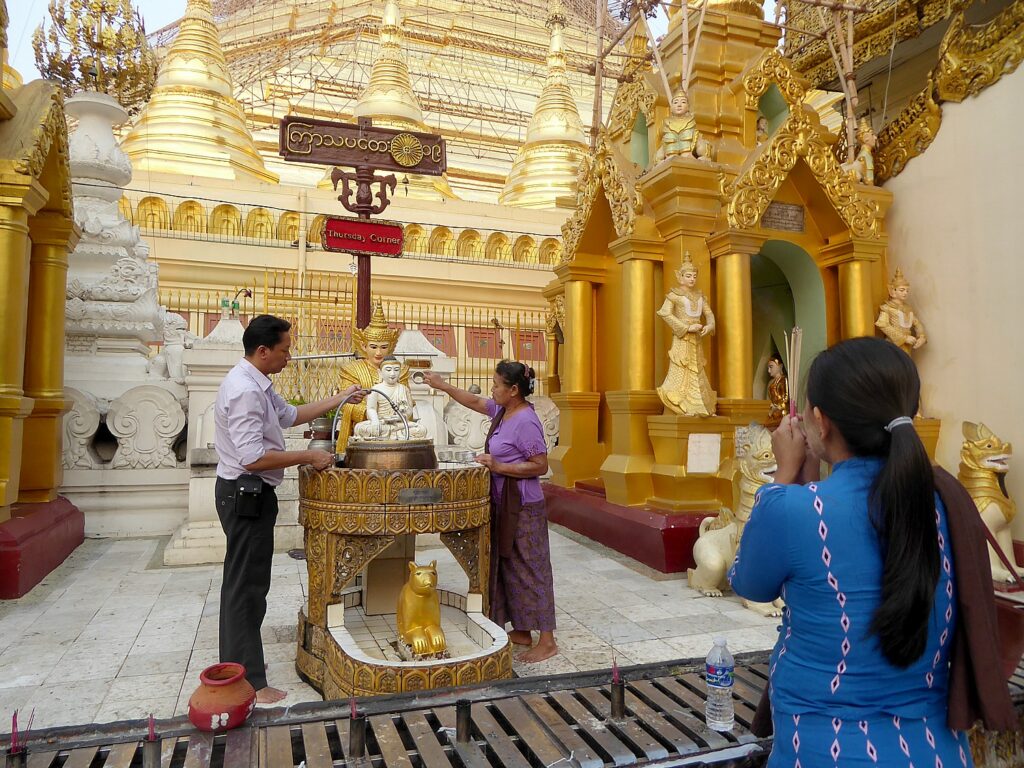
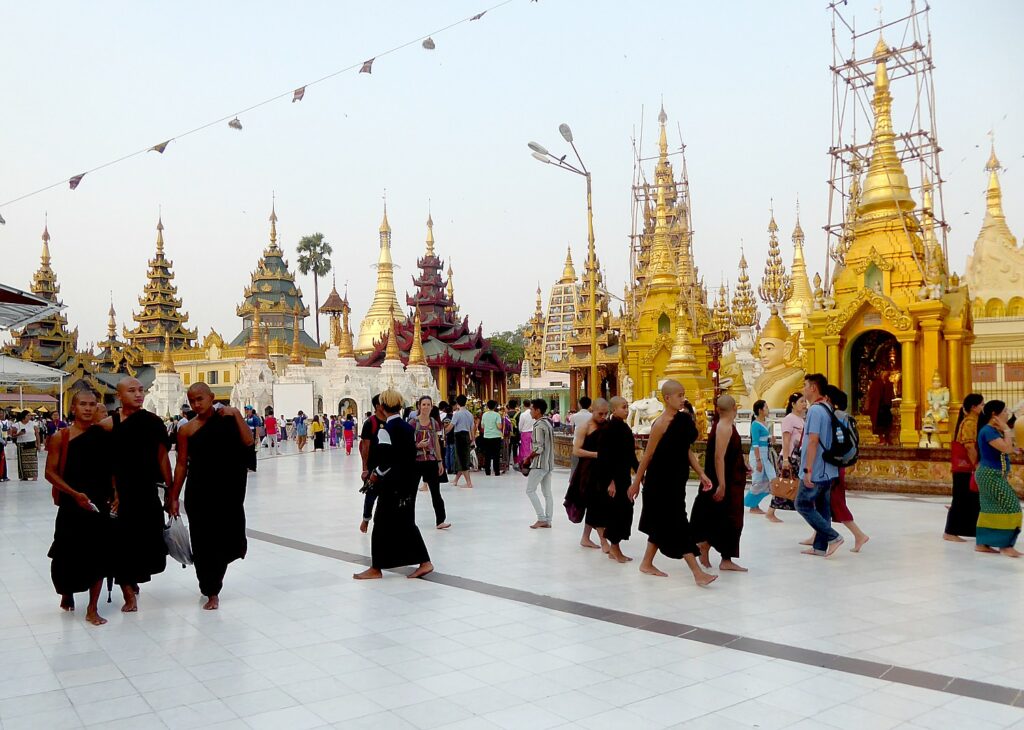
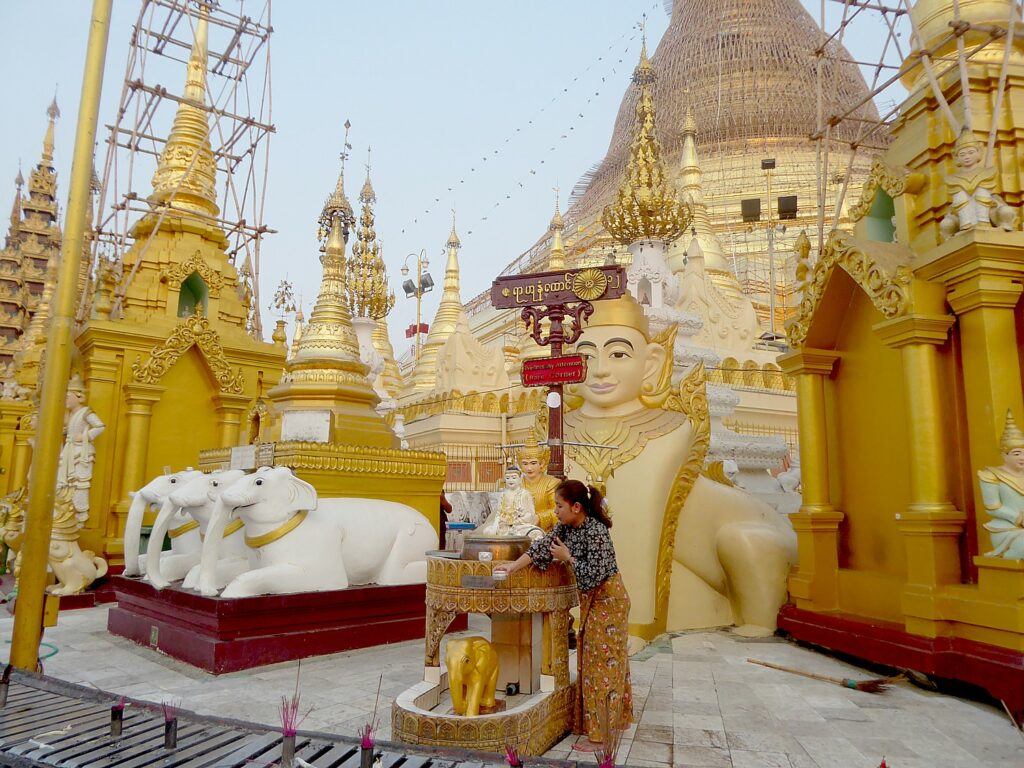
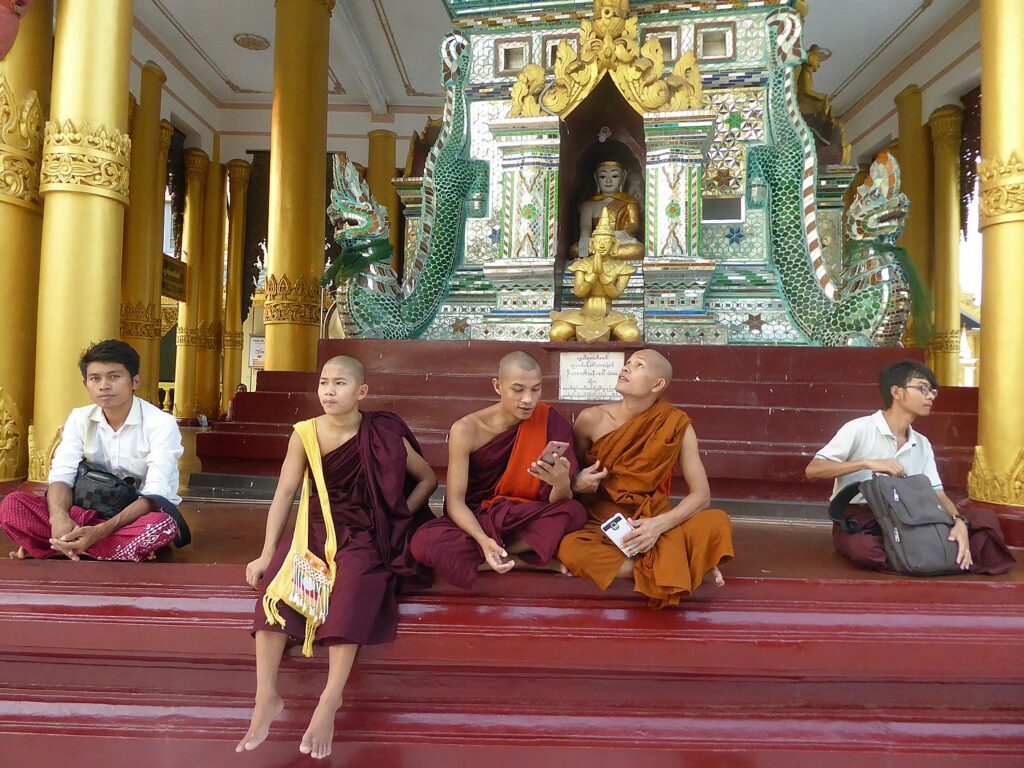


We move among the bustling activity of devotees and monks washing the statues, offering flowers, worshiping, and meditating.
Most interesting is coming upon a procession of families celebrating the induction of two young boys into the monastery.
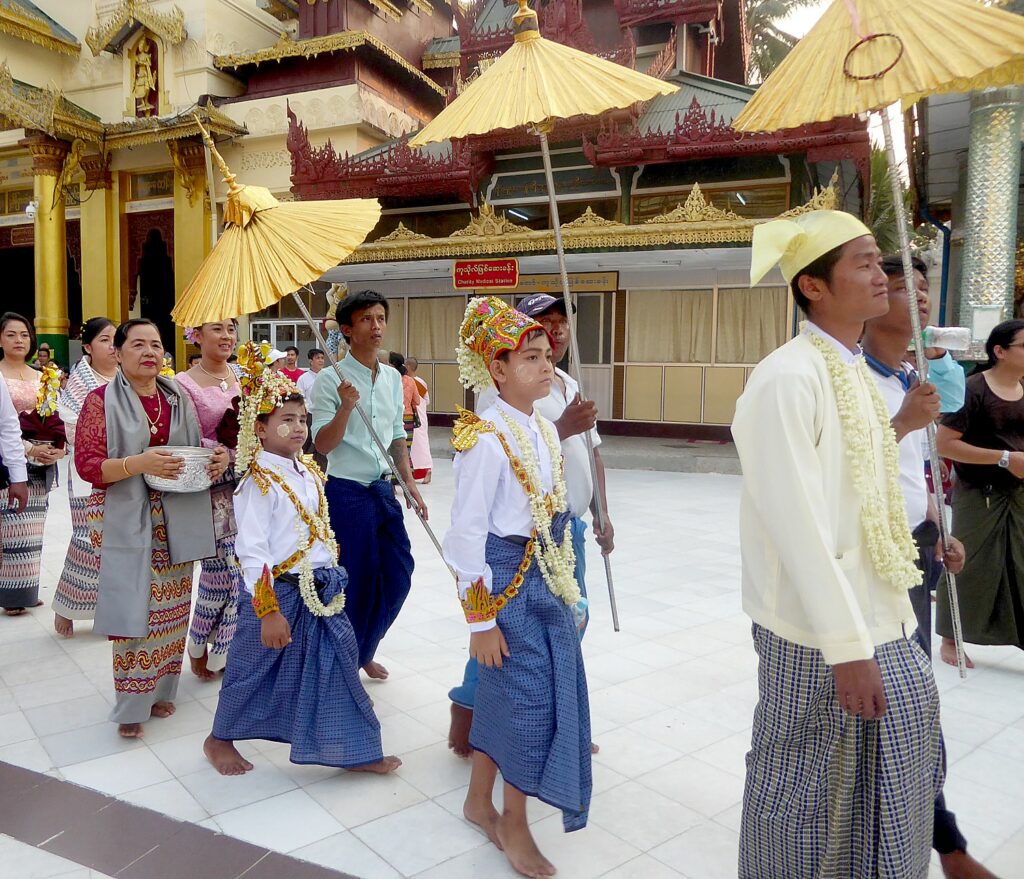
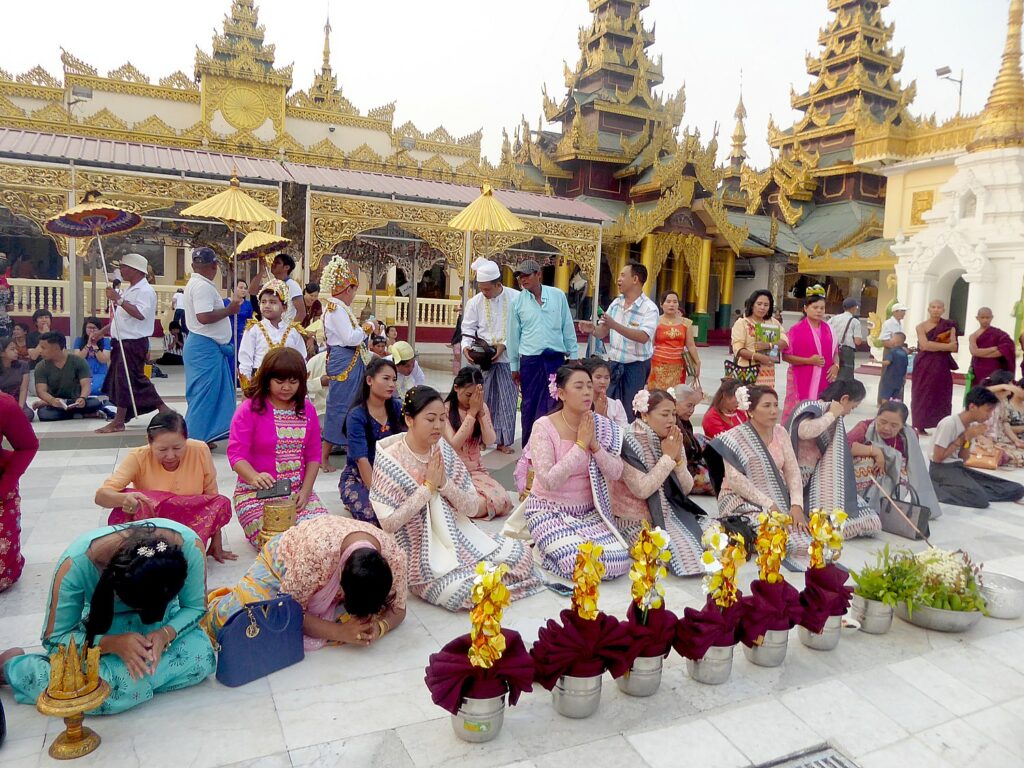
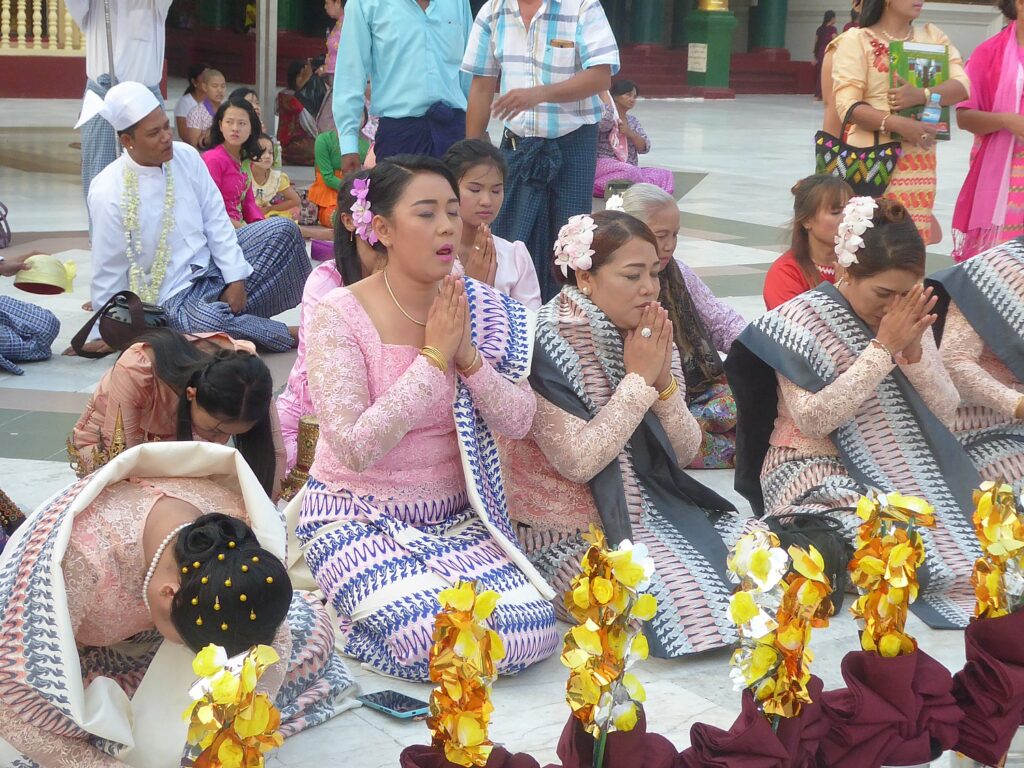
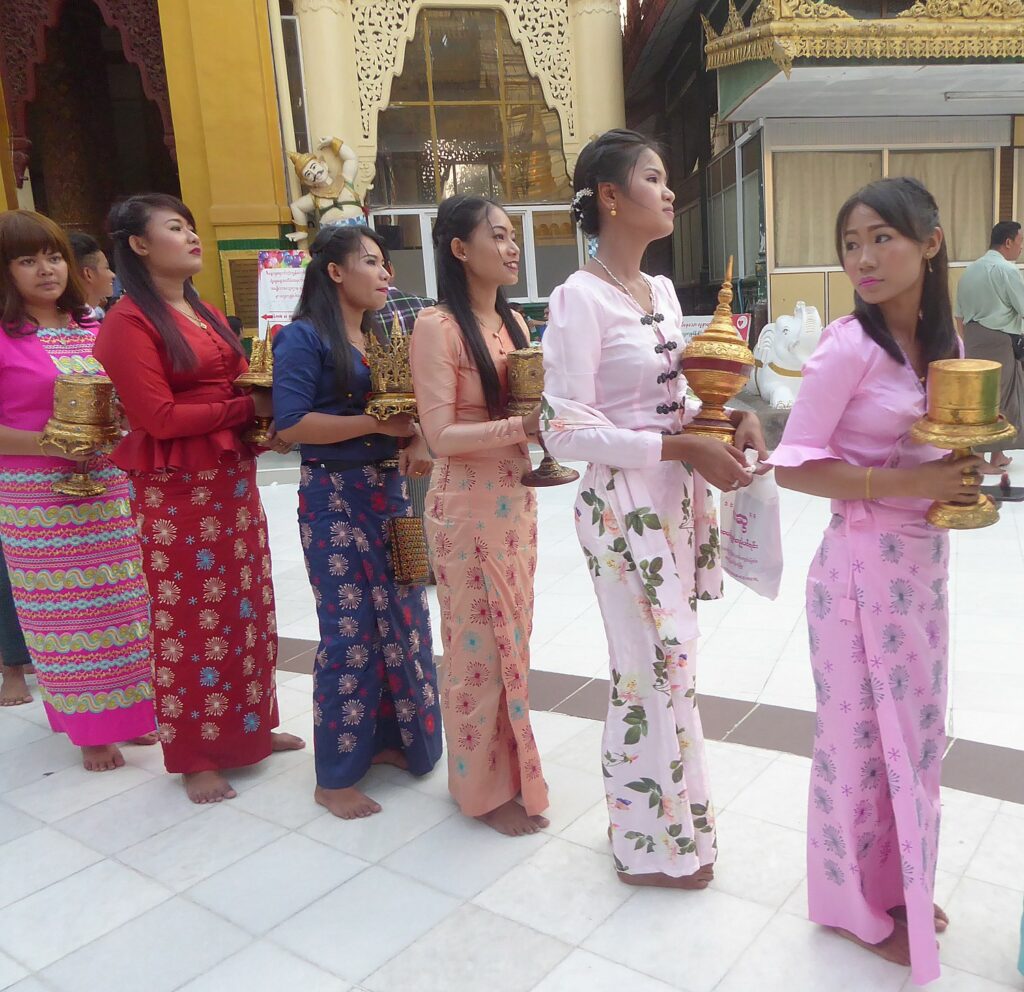
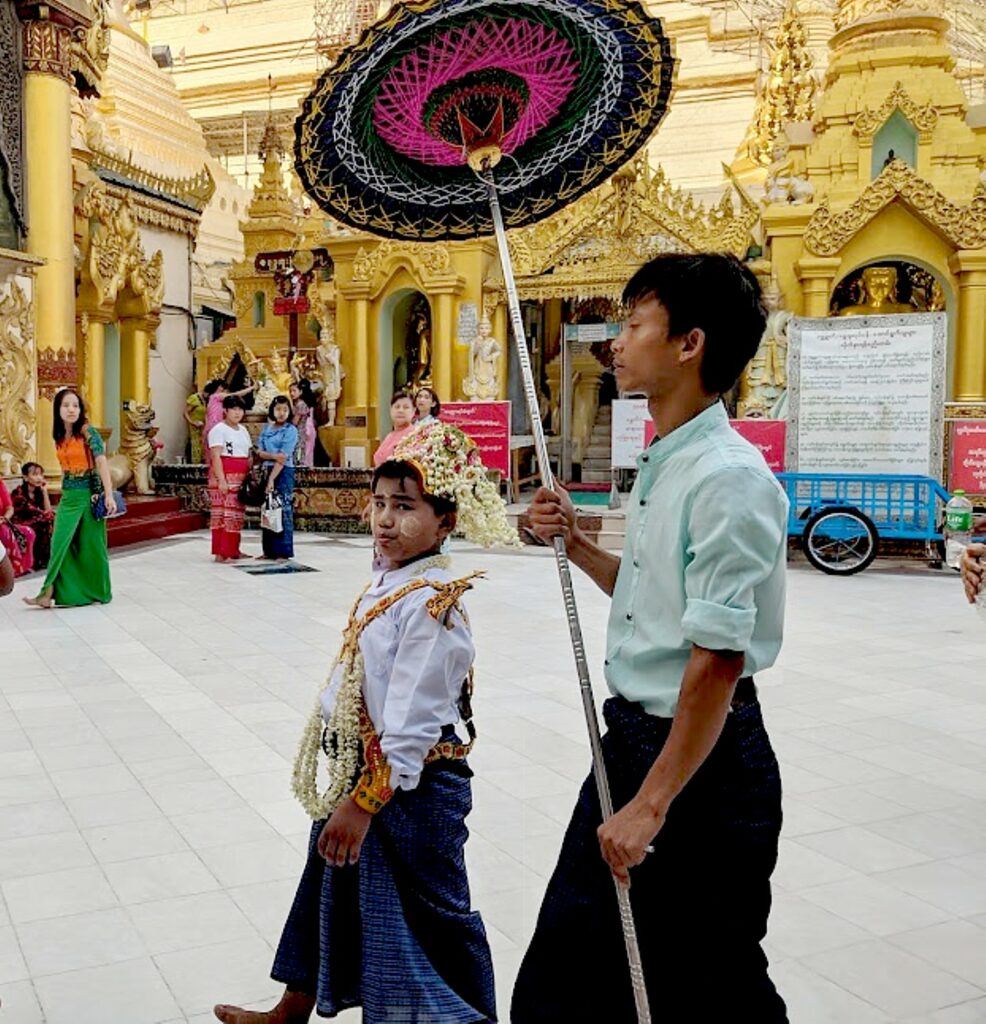
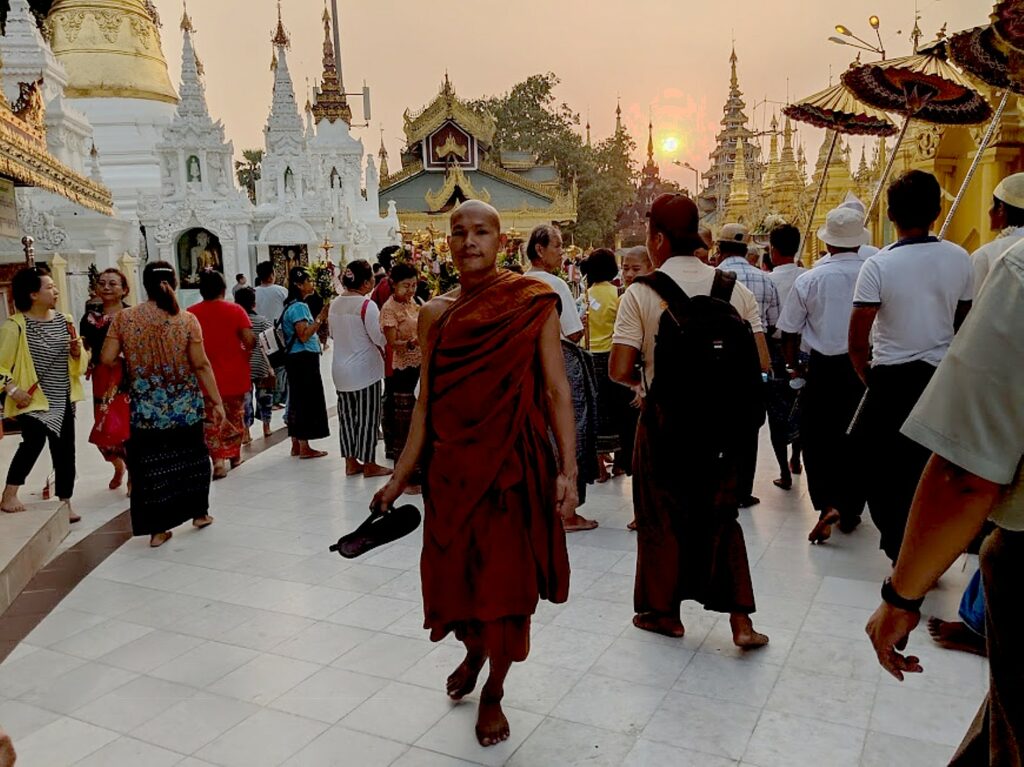
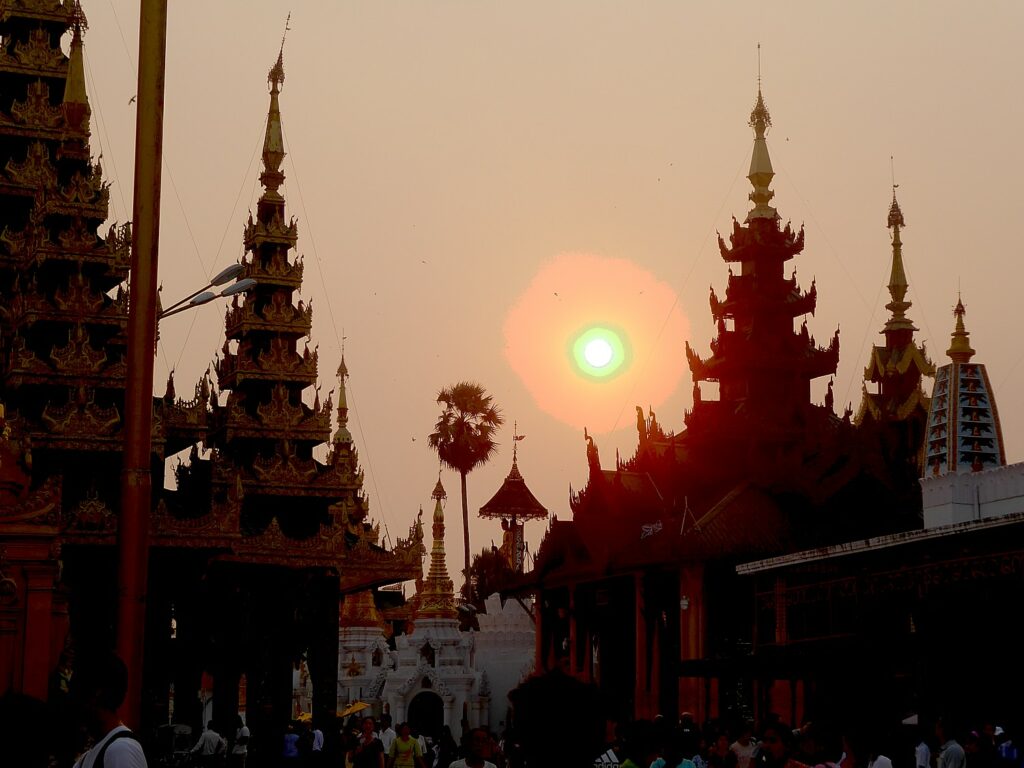
(The Sule Pagoda which I visited the evening we arrived in Yangon – was it just four days ago? – was also magnificent, but Shwedagon is on a different scale of magnificent.)
(See more information on visiting Schwedagon Pagoda, www.shwedagonpagoda.com).
You could easily spend hours here, but we must dash back in a taxi to get back to the Global Scavenger Hunt group, arriving a few minutes past the 6 pm deadline (we aren’t competing to win the challenge to be the “World’s Best Travelers,” so we did not have to turn in our scorecards documenting our scavenges, though, in fact, we have been doing as many as we can.
At a hosted dinner at a Japanese restaurant, all of us trade our stories of adventure and exploration from Yangon and some combination of Bagan, Mandalay and Inle Lake. One of the scavenges invited the teams to take part in a volunteering opportunity and Lawyers Without Borders, the team from Houston, volunteered at a Youth Development monastery in Yangon. “The monks take in, house, feed and educate orphans from far-flung and remote villages around the country,” Zoe Littlepage writes on her blog (http://zoeandraineygreatescape.blogspot.com). “My favorite part was eating lunch with the kids. They sing their prayers before they can start eating.. magical.” (Zoe Littlepage and Rainey Booth, of Houston, are on their 12th Global Scavenger Hunt, and are five-time champions, and their law firm helps support the philanthropic works of the Global Scavenger Hunt Foundation.)
We return to the hotel to get our four-hour notice and learn where our 23-day “Blind Date with the World” mystery tour continues next: an eight-hour layover challenge in Bangkok and then on to Abu Dhabi – essentially having breakfast in Myanmar, lunch in Thailand and dinner (or nightcap?) in the United Arab Emirates.
We are out the door at 5:15 am (the hotel sends us off with breakfast boxes), to get to the airport.
It is worth noting that in addition to having a unique alphabet and language, Myanmar (formerly Burma) asserts its identity by keeping its clocks half-hour different from its timezone.
I realize that time is really fluid – not really stable or fixed ordering our day, a concept rather than an invention. We lost a full day crossing the timezone during that first flight of more than 14 hours, and have been picking up an hour or so here as we go.
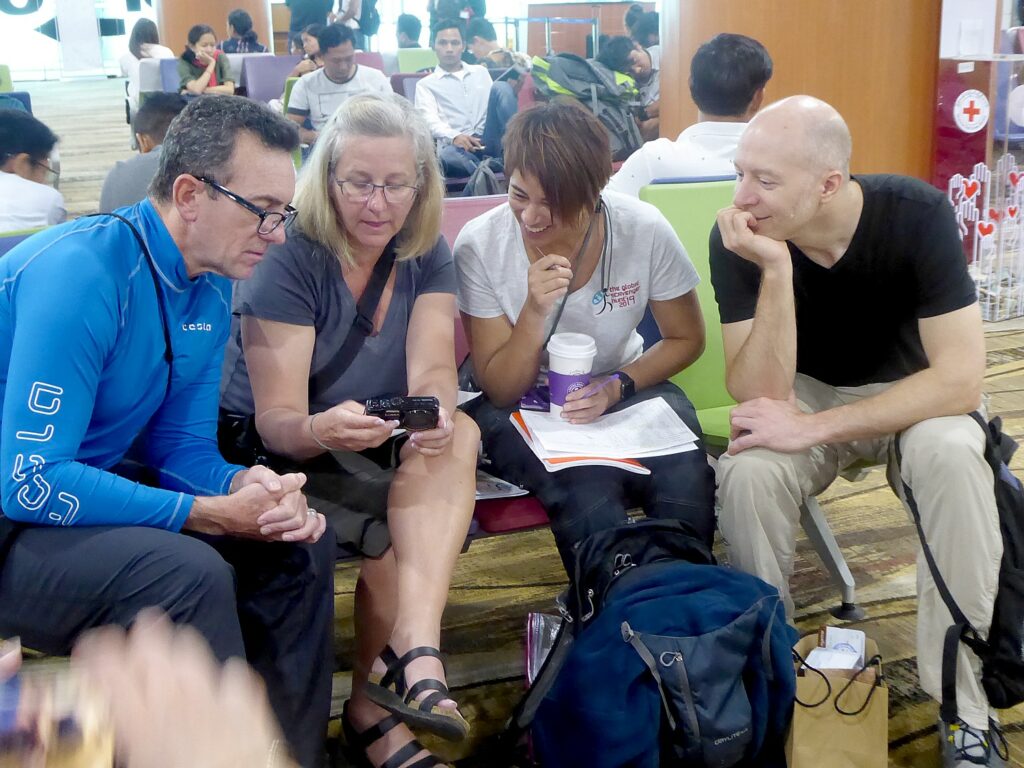
At the end of this Par 5, Leg 3 dash through Myanmar, SLO Folks, a team from central California who are the returning champions from last year’s Global Scavenger Hunt, earned the second most points with 37 scavenges in Yangon, Bagan and the point rich area of Inle Lake for 2,055 points; and Lawyers Without Border, a team from Houston on their 12th Hunt (they have won it five times) had the most, completing 52 scavenges in Yangon, Bagan & Inle Lake earning 2,745 points.
More Myanmar travel information is at http://myanmartravelinformation.com/top-destinations/yangon.html.
The Global Scavenger Hunt is an annual travel program that has been operated for the past 15 years by Bill and Pamela Chalmers, GreatEscape Adventures, 310-281-7809, GlobalScavengerHunt.com.
________
© 2019 Travel Features Syndicate, a division of Workstyles, Inc. All rights reserved. Visit goingplacesfarandnear.com, www.huffingtonpost.com/author/karen-rubin, and travelwritersmagazine.com/TravelFeaturesSyndicate/. Blogging at goingplacesnearandfar.wordpress.com and moralcompasstravel.info. Send comments or questions to [email protected]. Tweet @TravelFeatures. ‘Like’ us at facebook.com/NewsPhotoFeatures
